- New Way To Sinhala language skills development


Natural disasters are created by human.

The Role of the Society in Preventing Drugs
The kandy esala perahera.

Simple idea…
The Kandy Esala Perahera or the Kandy Dalada Perahera is a magnificent Buddhist festival for Buddhists all over the world. The Dalada Perahera which is also a national event for us, is a beautiful and colorful cultural festival for the rest of the world.
The whip communicates that the procession is approaching. And then there are fire balls dancers . They develop the attraction of the procession and draw the attention of the spectators to the procession. Buddhist flags and national flags group demonstrate that this is a Buddhist procession and that this is a national event. From here onwards the Dalada Perahera will have many other wonderful features. It depicts religious rituals, dancing, singing and dancing by traditional artists, costumes, sports and crafts.
The Kandy Esala Perahera reveals the Sri Lankan identity to the world. This is our cultural heritage. Therefore, thousands of people flock to Kandy to view the Esala Perahera irrespective of race, religion or caste. Not only us, but even foreigners from far off countries come here to witness the beauty of it.
It is our duty to understand the value of the historic Dalada Perahera and hand it over to the next generation.
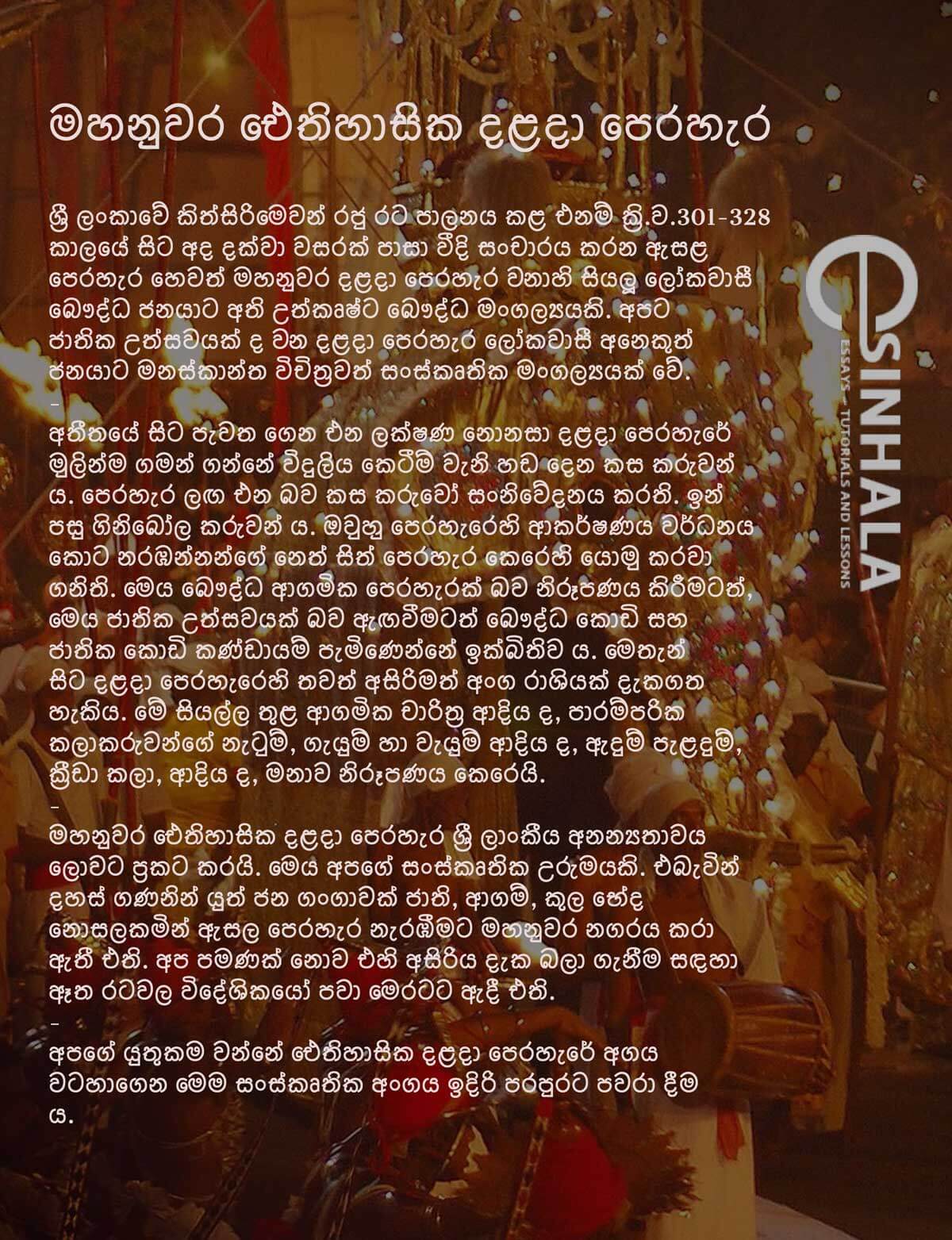
This Essay has 218 words
Total number of words to be = 200 Total Marks = 14
Sinhala essay :- The Kandy Esala Perahera/ Kandy Dalada Pereahera – Grade 8
Shirantha Perera
Related posts.
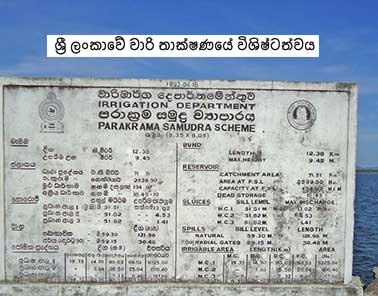
Excellence in Irrigation Technology in Sri Lanka

Christmas Festival

Vesak Festival
28 comments.
THIS IS GREAT ESSAY FOR SRI LANAK I OBEDIENT FOR THIS ESSAY THANK YOU FOR ALL BECAUSE THEY HAVE DO GOO WORK THANK YOU FOR FOR THE LETTER
This was useful to me. Thanks a lot
this essay is very good
Yes it’s very good
this is very helpful with me
????????????
thank u lot
Awesome????????
thank you lot
Daladamperahera in for nation sinhala
this helped me a lot
Leave a Reply Cancel reply
Your email address will not be published. Required fields are marked *

- English Essays Grade 2
- English Essays Grade 3
- English Essays Grade 4
- English Essays Grade 5
- English Essays Grade 6
- English Essays Grade 7
- Sinhala Essays (සිංහල රචනා ) Grade 2
- Sinhala Essays (සිංහල රචනා ) Grade 3
- Sinhala Essays (සිංහල රචනා ) Grade 4
- Sinhala Essays (සිංහල රචනා ) Grade 5
- Sinhala Essays (සිංහල රචනා ) Grade 6
- Sinhala Essays (සිංහල රචනා ) Grade 7
- Sinhala Alphabet
- English Stories
- Sinhala Stories
- Videos Fun and Learning
- Remote Control (RC)
- Sinhala Baby names for Boys and Girls | බබාට නමක් | පුතාට |දුවට
Select Page
KANDY PERAHERA
- Essays English Grade 4
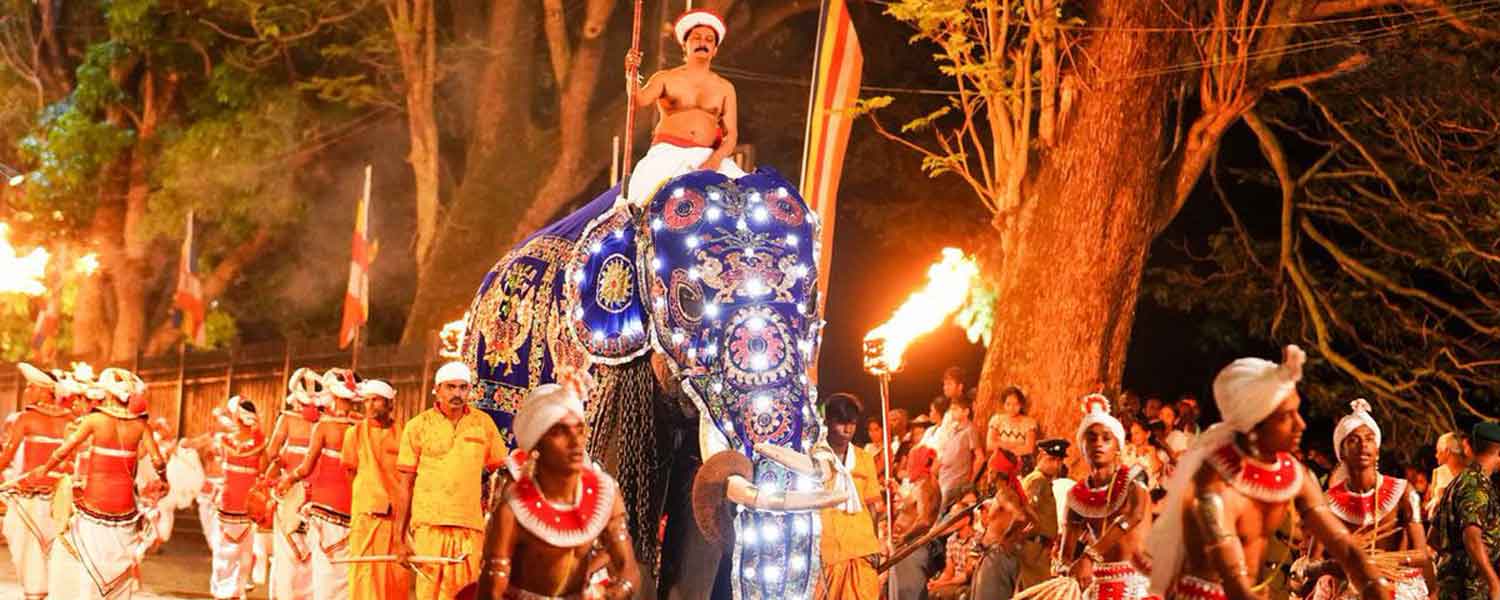
Kandy Perahera English essay
Kandy Perahera comes in March. It is very interesting. A lot of people visit Kandy to see the Perahera. Many elephants walk in the Perahera. ‘The Maligawa elephant’ is the most beautiful.
It takes the casket of tooth -the tooth of Lord Buddha. The Kandyan dancers go in front. Elephants come after them. People watch the Perahera and they feel happy. It is a colourful festival.
100 % FREE ENGLISH ESSAYS FOR GRADE 4
English essays for Grade 2 (Class 2) , Grade 3 (Class 3), Grade 4 (Class 4), Grade 5 (Class 5), Grade 6 (Class 6), Grade 7 (Class 7)
We are excited to announce that we are working with more new features to guide parents and students on essay writing.
Writing is one of the essential skills for your child’s education. Unfortunately, classroom settings frequently don’t give sufficient practice time to sharpen those writing abilities truly. So we are preparing simple and important guidelines to teach essay writing to your children at home and hope to publish as soon as possible.
OTHER USEFUL LINKS
The national e-learning portal for the general education.
The e-thaksalawa is made up of resources developed straightened to grade 1 to 13 syllabus materials such as creative lessons, all learning resources including past papers, term papers, questions, syllabuses, textbooks, teacher instructional manuals in Sinhala Tamil and English.
How useful was this Essay / Post?
Click on a star to rate it!
Average rating 3.2 / 5. Vote count: 23
No votes so far! Be the first to rate this post.
We are sorry that this post was not useful for you!
Let us improve this post!
Tell us how we can improve this post?

Fun Learning for preschoolers and kids

WHAT DO I DO EVERY MORNING
I Do Every Morning English essay I get up at 6. I clean my teeth and wash my face. Then I pray to God. I have my tea...

OUR SCHOOL SPORTS MEET
Our School Sport Meet English essay We have our sports meet every May. It is a great day. We have races; 100 meters,...

OUR CLASS TEACHER
Our Class Teacher English essay Miss Suvini Nihara is our class teacher. She is a fair, tall, thin lady. She has a...

My Aunty English essay My aunty’s name is Duleesha. She has long wavy hair and a fine ponytail. She is a slim young...
FLYING KITES

Recent Posts
- Sinhala Baby names for Girls |දුවට නමක් | ඔ
- Sinhala Baby names for Girls |දුවට නමක් | උ
- Sinhala Baby names for Girls |දුවට නමක් | එ
- Sinhala Baby names for Girls |දුවට නමක් | ඊ
- Sinhala Baby names for Girls |දුවට නමක් | ඉ
- Baby Names- Boy
- Baby Names- Girl
- Essays English Grade 2
- Essays English Grade 3
- Essays English Grade 5
- Essays English Grade 6
- Essays English Grade 7
- Essays Sinhala Grade 2
- Essays Sinhala Grade 3
- Essays Sinhala Grade 4
- Essays Sinhala Grade 5
- Essays Sinhala Grade 6
- Essays Sinhala Grade 7
- Fun Learning
- Stories English
- Stories Sinhala
Submit a Comment Cancel reply
Your email address will not be published. Required fields are marked *
Save my name, email, and website in this browser for the next time I comment.
Submit Comment
Pin It on Pinterest
Share this post with your friends!

- Fashion & Beauty
මහනුවර දළදා පෙරහැර
පෙරහැර මාසය.
පුරාතනයේ සිට පෙරහැර මාසය ලෙස හැඳින්වෙන්නේ ඇසළ මාසයයි. එයට හේතුව වන්නේ ඇසළ මාසයෙහි දිවයිනේ ප්රධාන විහාරස්ථාන කිහිපයක් මුල්කොට ගෙන පෙරහැර පැවැත්වීමයි. මෙසේ පැවැත්වෙන අලංකාර පෙරහැර දේශීය ජනයාගේ මෙන්ම විදේශිකයන්ගේ ද ආකර්ෂණයට ලක්වූ දේශීය සංස්කෘත අගයක් වෙනවා. මහනුවර මෙන්ම අලුත් නුවර , නවගමුව , දෙවුන්දර , රත්නපුරය , කතරගම ආදී ස්ථානවල ඇසළ පෙරහැර පැවතුනද ඉතා උත්කර්ෂයෙන් ඇසළ පෙරහැර පැවැත්වෙන්නේ මහනුවර දළදා මාලිගාව ආශ්රිතවය.
දළදා පෙරහැර චිරාගත සම්ප්රදායන්ට අනුකූලව තමයි පවත්වන්නේ. දළදා පෙරහැර පැවැත්වෙන්නේ නැකත් මුල්කරගෙන. ඊට අදාල නැකැත් පිළියෙල කිරීමේ කාර්යය භාරව සිටින්නේ නැකත් මොහොට්ටාලට ය. බොහෝ විට මෙම නැකැත් යෙදෙන්නේ ඇසළ මාසයට. ඇතැම් විටක මෙය ඇසළ- නිකිණි දෙ මාසයටම අදාළ වෙනවා.
නුවර පෙරහැර , සෙංකඩගල පෙරහැර , සිරි දළදා පෙරහැර , මහනුවර පෙරහැර , මාලිගා පෙරහැර , කන්ද උඩරට පෙරහැර සහ ඇසළ පෙරහර යනුවෙන් මෙම මහනුවර දළදා මාලිගාවේ පැවැත්වෙන පෙරහැර හැඳින්වෙනවා.
චිරාගත සම්ප්රදායට අනුව දළදා මාලිගාවේ පෙරහැර පවත්වා අවසානයේ දී දිය කැපිය යුතු වෙනවා. දියකැපුම් මංගල්යයෙන් පසුව කන්ද උඩරටට අයත් සෙසු විහාර හා දේවාල වල පෙරහැර පැවැත්වීම ආරම්භ වෙනවා. කන්ද උඩරටට මෙම සමය පෙරහැර මංගල්ය සමයකි. එමනිසා අපේ පැරැන්නෝ ඇසළ මාසය “පෙරහැර මාසය” ලෙස හඳුන්වනවා.
දළදා වහන්සේ ලක්දිවට වැඩම කරවීම
බුද්ධ පරිනිර්වාණයෙන් සියවස් අටකට වඩා වැඩි කාලයක් කලිඟු රට පූජෝපහාරයන් ට ලක් වෙමින් පැවැති දළදා වහන්සේ ක්රිස්තු වර්ෂ 4 වන සියවසේදී පමණ මෙරටට වැඩම වීමට හේතු වී ඇත්තේ ඒ වෙනුවෙන් හටගත් යුදමය වාතාවරණය නිසා බව පැහැදිලි වෙනවා.
දන්ත ධාතුන් වහන්සේ ගේ ප්රාතිහාර්යයන් පිළිබඳව ඇසූ දඹදිව ප්රාදේශීය පාලකයන් දන්තධාතුව අයත් කරගැනීමට සේනාව සමඟ දන්ත පුරයට ආවා. එවකට දන්ත ධාතුව ගුහසීව රජු භාරයේ පැවතියා. මගේ දිවි තිබෙන තුරු දළදාව සතුරන්ට නොදෙන්නෙමි සිතූ ගුහසීව රජු තමා යුද්ධයෙන් පරාජය වුවහොත් දෙව් මිනිසුන් විසින් පුදනලද දළදාව රැගෙන ලක්දිවට යන ලෙස තම බෑණනුවන්ට පවසා සිටියා. එහෙත් මහ සයුරෙන් එතෙර පිහිටි සිංහල දේශයෙහි සිටින්නේ ඔබගේ හෝ මාගේ නෑයන් නොවේ යැයි පැවසූ දන්ත කුමරු ඒ පිළිබඳව සැක උපදවා ගත්තා. සිංහල දේශයේ මිනිස්සු බුදුරදුන් කෙරෙහි සැදැහැති බෞද්ධයෝය. ආරක්ෂාව සඳහා දළදාව ගෙණ ගොස් දෙන්නැයි දළදාව භාරව සිටි දන්ත කුමරුට කලිඟු රජ තෙමේ පැවසූ බව දාඨාවංශයේ පැවසෙනවා.
මෙසේ දඹදිව කාලිංග දේශයෙන් මෙරටට වැඩම කළ දළදා වහන්සේ අනුරාධපුරයට වැඩමවා පුද පූජා පැවැත්වීම පිණිස දළදා ගේක වඩා හිඳ වූ බව ඓතිහාසික තොරතුරු පෙන්වා දෙනවා. ලක්දිව දළදා පෙරහැර ඉතිහාස පුවත ආරම්භ වන්නේ ක්රිස්තු වර්ෂ 301- 328 දක්වා රජකම් කළ කිත්සිරිමෙවන් රජතුමාගේ කාලයේදීය.
දළදා මැදුරු ඉදිවීම
ඓතිහාසික තොරතුරු වලට අනුව කීර්ති ශ්රී මේඝවන්න රජතුමා මුලින්ම දළදා මන්දිරයක් ඉදිකර එහි ශ්රී දළදා වහන්සේ තැන්පත්කර ඊට ගරු බුහුමන් දැක්වීම සඳහා වාර්ෂික පෙරහැර සම්ප්රදායක් ද ඇති කළේය. ඉන්පසුව අනුරාධපුර අභයගිරි විහාරයට දළදා වහන්සේ පෙරහැරින් වැඩමවා පුද සත්කාර කර තිබෙනවා. ඒ කාලයේ දළදා පෙරහැර ඉතා අලංකාර වූවක් බව හියුං සියෑං භික්ෂුවගේ වාර්තාවල සඳහන් වෙනවා.
මහාවංශය ප්රධාන ඓතිහාසික සාධක පෙන්වා දෙන පරිදි දළදා පෙරහැර ඉතා උත්කර්ෂවත් අන්දමින් පවත්වා තිබෙනවා. පරසතුරු ආක්රමණ නිසා රාජධානි මාරුවීමත් සමඟ දළදා වහන්සේ අනුරාධපුරයෙන් පොළොන්නරුවට , දඹදෙණියට , යාපහුව ට, කුරුණෑගලට , ගම්පොළට හා කෝට්ටේ යන රාජධානි වලට වැඩම කරවා ඒ ඒ රාජධානියෙහි දළදා මැඳුර ඉදි කරවා හැකි පමණින් දෛනික පූජා පැවැත්වීමත් වාර්ෂික පෙරහර මංගල්යය සිදු කිරීමත් කර තිබෙනවා. සියලු රාජධානිවල දී දැකගත හැකි ප්රධාන ලක්ෂණයක් වන්නේ දළදා වහන්සේට මුල් තැනක් දී කටයුතු කිරීම ය.
සෙංකඩගල දළදා මාළිගය ඉදි වීම
පළමුවෙනි විමලධර්මසූරිය රජතුමා රාජ්යත්වයට පැමිණීමත් සමග ක්රිස්තු වර්ෂ 1592 දී සෙංකඩගල නුවර සිංහල රාජධානිය ආරම්භ විය. ඒ වන විට දළදා වහන්සේ සබරගමු පළාතේ දෙල්ගමු රජමහ විහාරයේ ඉතා රහසිගත ලෙස වැඩ සිටියේය. මෙසේ දෙල්ගමුවේ රහසිගතව වඩා හිඳුවාගෙන දෛනික පුද සත්කාර කරමින් සිටි දළදා වහන්සේ රජු ඊට අවශ්ය ආරක්ෂාව ලබාදී සෙංකඩගලපුරට වඩමවා ගෙන ආවේය. වත්මන් දළදා මැදුරට අඩිතාලම වැටුණේ ඉන් පසුවය.

දළදා පෙරහැර
පරම්පරානුගතව පැවත එන නර්තන වාදන හා රංගන අංග රාශියකින් හා ඉපැරණි චාරිත්ර වලින් සමන්විත වන පෙරහැර ශ්රී ලාංකේය අනන්යතාව පිළිබිඹු කරන උත්සවයක් ලෙස සැලකෙනවා . අපේ ඇසල පෙරහැර පැරණි ඉන්දියාවේ පැවැති ආෂාඨ උත්සව හෙවත් ඇසළ කෙළියේ පරිණාමයෙන් ඇතිවූවක් ලෙස සැලකෙනවා. මහනුවර ඇසළ පෙරහර වර්තමාන මුහුණුවර ගෙන ඇත්තේ කීර්ති ශ්රී රාජසිංහ රජ සමයෙහි පටන් බව සැලකෙනවා.
වර්තමාන මහනුවර ඇසළ පෙරහරේ ආරම්භය ක්රිස්තු වර්ෂ 18 වන සියවස මැද භාගයේ දී පමණ සිදුවන්නට ඇතැයි සැලකෙනවා. ඊට ඇතුළත් වූයේ නාථ , කතරගම , විෂ්ණු , පත්තිනි යන සතර දේවාලයේ පෙරහැර පමණි. වැලිවිට සරණංකර සංඝරාජ හිමියන්ගේ අනුශාසනා පරිදි කීර්ති ශ්රී රාජසිංහ රජු ( ක්රිස්තු වර්ෂ 1747 - 1782) විසින් එකී සතර පෙරහරට දළදා මාලිගාවේ පෙරහරක් ද එක් කිරීම හේතුවෙන් ඇසළ පෙරහරට බෞද්ධ මුහුණුවරක් ලැබුණා සේ සැලකෙනවා. ඒ අනුව වර්තමාන දළදා පෙරහැරේ ආරම්බය කීර්ති ශ්රී රාජසිංහ රජ සමයෙහි සිදූ වුවා සේ සැලකීම ඉතාම සුදුසුය.
පැරණි දළදා පෙරහර සංස්කෘතිකාංග ප්රදර්ශනයට වඩා රාජ්ය බලය පෙන්වීමේ අවස්ථාවක් කරගෙන තිබෙනවා. එවකට ලංකාවේ ආණ්ඩුකාරයා වූ ශ්රීමත් එඩ්වඩ් බාන්ස්ගේ අවසරය පරිදි 1828 මැයි 29 වන දින පැවැත්වුණු දළදා පෙරහැර ආරම්භ වී ඇත්තේ යුද්ධ ආචාර මධ්යයේය.
කප් සිටුවීම
දළදා මාලිගාවේ “නැකත් මොහොට්ටාල” විසින් නියම කරනු ලබන සුබ මොහොතින් කප්සිටුවීමෙන් පෙරහර ආරම්භ වෙනවා. කප් සිටුවීම යනු සතර දේවාලයේ පිරිසක් ඇසළ මස අමාවක දිනට දින කිහිපයකට පෙර අලුත්නුවර දේවාල භූමියෙන් හෝ ඊට තදාසන්න උචිත දේවාල බිමකින් වියත් තුනක වට ප්රමාණයකින් සමන්විත පල නොදැරී නෑඹුල් කොස් ගසක් තෝරාගෙන එම කොස් ගසට පුද පූජා පවත්වා එහි අරක් ගත් දෙවියෙක් වේ නම් ඉවත්ව යන ලෙස ආයාචනා කොට ගස කපා එහි කදෙන් රියන බැගින් දිගැති කොටස් හතරක් කපාගෙන දේවාල සතරට බෙදාගෙන පෙරහැරෙන් ගෙන ගොස් දේවාල භූමියෙහි සිටුවීමයි.
දේවාල පෙරහර
සතර දේවාලයේ කපුවන් දේවාලයට අයත් රන් ආයුධ කප වටා වැඩම කරවන කුඩ , කොඩි , සේසත් , දවුල් , හොරණෑ සහිත පෙරහැර “දේවාල පෙරහර” ලෙස හැඳින්වෙනවා. මේ සඳහා අලි ඇතුන් හෝ පෙරහැර ශිල්පීන් වස්ත්රාභරණයෙන් සැරසීමක් සිදු නොවෙනවා. දේවාල රාජකාරි සිදු කරන ඇඳුම්වලින් සැරසී දේවාල පෙරහරට සහභාගි වෙනවා. තවත් සුවිශේෂී කරුණක් වන්නේ මේ සඳහා බැතිමතුන් සහභාගි කර නොගැනීමයි. මෙම දේවාල පෙරහැර පුරා දින පහක් සිදු කෙරෙනවා.
කුඹල් පෙරහර
දේවාල පෙරහැර පවත්වා පස් වන දිනයේ සිව් දේවාලයේ බස්නායක නිලමේ වරුන් ඇතුළු නිලධාරීහු රන්සිවි ගෙයක රන් ආයුධ හිඳුවා රන්සිවිගෙය ඇතු පිට තබා පෙරහරෙන් අවුත් දළදා මාලිගාව ඉදිරිපිට දේව සංහිඳේ දී දළදා කරඬුව සහිත රන්සිවිගෙය වැඩමවන මාළිගාවේ ඇතා ප්රමුඛ පෙරහැර පෙරටු කරගෙන දින පහක් වීදි සංචාරය කරනවා. මෙය “කුඹල් පෙරහර” නමින් හැඳින්වෙනවා. මෙහිදී කුඹල් පෙරහර සඳහා දියවඩන නිලමේතුමා සම්පූර්ණ රාජකාරි ආයිත්තම් වලින් හැඩ ගැන්වීමෙන් තොරව සහභාගි වෙනවා. තවද පෙරහර ශිල්පීන් ලෙස නැට්ටුවන් හා වාදකයන් පළමුවරට ඉදිරිපත් වන්නේ නම් ඒ සඳහා ඉඩ විවර වී තිබෙන්නේ කුඹල් පෙරහැරට සහභාගිවීම ඔස්සේය. ඒ නිසා මෙය “අඩක් නිම වූ පෙරහර” යනුවෙන් ද හැඳින් වෙනවා. කුඹල් පෙරහර ලෙස නම යෙදුණේ අතීතයේ එක් කලෙක පළමු දළදා පෙරහර වීදි බැසීමට පෙර අලුත් වළං කදක් රැගත් කුඹලෙකු එනම් වළන් කත් කරුවෙකු පෙරහරේ ඉදිරියෙන් ගමන් කළ නිසා බව ජනප්රවාදයේ සඳහන් වෙනවා . පෙරමුණේ රාල , ගජනායක නිලමේ , කාරියකරවන රාළ , දියවඩන නිලමේ ආදී නිලධාරීන්ද කසකරුවන් , කොඩි , සේසත් , පන්දම් දරන්නන් , පාවාඩ එලන්නන් , දවුල් , බෙර, හොරනෑ ආදිය වයන්නන් , නැට්ටුවන් , පන්තේරුකරුවන් ආදීන්ගෙන් මේ පෙරහර සමන්විත වෙනවා.
රන්දෝලි පෙරහර
පුරා දින පහක් කුඹල් පෙරහර පැවැත්වීමෙන් පසුව එළඹෙන්නේ “රන්දෝලි පෙරහර” වීදි බැසීමයි. සතර දේවාලයන්හි දේවාභරණ වැඩමවන වාහන (රන්දෝලි) කුඹල් පෙරහරේ පස්වන දින යෙදී පෙරහැර අගට එක් කෙරෙනවා . එය “රන්දෝලි පෙරහර” නමින් හැඳින්වෙනවා. එයද පුරා දින පහක් නොකඩවා සිදු කෙරෙනවා. දළදා පෙරහැරේ කූටප්රාප්තිය ලෙස සැලකිය හැකි මෙම පෙරහර හේවිසි කරුවන් හා හොරණෑ කරුවන් , නැට්ටුවන් , අලි ඇතුන් ආදීන් ගෙන් ප්රමාණාත්මකව කුඹල් පෙරහැරට වඩා විශාල වන අතර ම විචිත්රවත් භාවයෙන් ද අනූන වෙනවා. අවසාන දින දෙකෙහි මෙම පෙරහර අතිශය අලංකාරවත්ව පවත්වනවා. රන්දෝලි පෙරහැර යනුවෙන් මෙය හඳුන්වන්නේ මහනුවර රජ සමයේ රජුගේ අගමෙහෙසිය හෙවත් “රන්දෝලිය” ගමන් කළ නිසාය.

මහා රන්දෝලි ය රන්දෝලි පෙරහරේ පස්වන දිනය හෙවත් අවසාන දිනය හඳුන්වන්නේ “මහා රන්දෝලි ය” යනුවෙනි. පෙරහරට අවසර ගැනීම
පෙරහැර ආරම්භ වන්නේ දියවඩන නිලමේතුමා නිසි අවසරය ලබා දීමෙන් පසුවය. එම නිසා දළදා පෙරහැර භාරව කටයුතු කරන කාරිය කරවන කෝරාළ , ගජනායක නිලමේ , කපුරාල වරු , ගම් දහයේ විදානේවරු , කම්කානම් රාළ , මොහොට්ටාල සහ වට්ටෝරුරාලලා පෙරහර ආයිත්තම් වලින් සැරසී දියවඩන නිලමේතුමා හමුවීමට පැමිණෙනවා. එය දියවඩන නිලමේතුමාගේ කාර්යාලයේ දී සිදු වෙනවා. දළදා තේවාව භාර සියලු නිලධාරීන් දියවඩන නිලමේතුමා ගෙන් අවසර හා ආශිර්වාද ලබාගැනීමෙන් පසුව දියවඩන නිලමේතුමා පෙරමුණේ රාල අතට “ලේකම්මිටිය” ද ගජනායක නිලමේ වෙත “රන් අංකුසය” ද පිරිනමනවා.
පෙරහැර වෙඩිමුර
සෑම දිනකම පෙරහැර පිටවීමට ප්රථම වෙඩිමුර තුනක් තබනවා. පළමු වෙඩිමුරය නිකුත්වීමත් සමගම සිව් මහා දේවාලවල පෙළ ගැසී සිටින සියලු පෙරහැර ශිල්පීහු සහ අලි ඇත්තු නියමිත පිළිවෙලට පැමිණ මාලිගාවේ පෙරහැර හා සම්බන්ධ වෙනවා.
දෙවැනි වෙඩි මුරය නිකුත් වන්නේ පළමු වැන්න නිකුත් වී මද වේලාවකට පසුවය. එයින් අදහස් කරන්නේ පෙරහැර සධාතුක කරඬුව ඇතුපිට රන්හිලිගෙයි තැන්පත් කළ බව ය. ඒ කටයුත්ත පැවරී තිබෙන්නේ දිය වඩන නිලමේතුමාටය.
තෙවැනි වෙඩි මුරය නිකුත්වන්නේ රන්හිලිගේ සහිත මංගල හස්තිරාජයා දළදා පෙරහරට එකතු වීමෙන් අනතුරුව පෙරහර ආරම්භ කළ බව දැනුම් දීමටය.
පෙරහරට එකතු වන අනෙකුත් අංගයන් පිළිවෙලින්,
- බෞද්ධ කොඩි කරුවන්
- පලාත් කොඩි කරුවන්
- අසිපත් ධාරීන්
- ගිනිබෝල කරුවන්
- පෙරමුණේ රාල
- ගජනායක නිලමේ
- මගුල් බෙර කරුවන්
- පොල් මල් නැට්ටුවන්
- හොරණෑ කරුවන්
- තම්මැට්ටම් කරුවන්
- දවුල්කරුවන්
- තාලම්පොට කරුවන්
- පතුරු නැට්ටුවන්
- සවරන් නැට්ටුවන්
- ලී කෙලි නැට්ටුවන්
- පන්තේරු නැට්ටුවන්
- වේවැල් වියන්නන්
- උඩැක්කි කරුවන්
- රබන් නැට්ටුවන්
- ගැට බෙර කරුවන්
- නෛයන්ඩි නැට්ටුවන්
- උඩරට වෙස් නැට්ටුවන්
- කාරිය කෝරාළ
- නාගසිංගම් වාදනය
- මංගල හස්තියා
- කවිකාර මඩුව
- දියවඩන නිලමේතුමා
- නාථ දේවාල පෙරහැර
- විෂ්ණු දේවාල පෙරහර
- කතරගම දේවාල පෙරහැර
- පත්තිනි දේවාල පෙරහැර
දළදා වීදිය , යටිනුවර වීදිය , හරස් වීදිය , කොටුගොඩැල්ල වීදිය , කන්දෙ වීදිය , ඩී එස් සේනානායක වීදිය ඔස්සේ නුවණ නගරයේ වීදි දිගේ ගමන් කරනු ලබන පෙරහැර අවසානයේ දී දළදා වහන්සේ වැඩමවා ගෙන දළදා මාලිගාවට පිවිසෙනවා. එය පෙරහර ගෙවදීම ලෙස හැඳින්වෙනවා. දළදා පෙරහර අවසන් වන්නේ සධාතුක කරඬුව රැගත් ඇතු දළදා මාලිගාවට පිවිස එයින් සධාතුක කරඬුව යළි දළදා වහන්සේ වැඩසිටින කුටියට වැඩම කරවීමෙනි. එවිට මාලිගා පෙරහර අවසන් වූ බව සැලකෙනවා. ඊට ගෞරවය සඳහා දළදා වහන්සේට ගිලන්පස පූජා කිරීම ඉන් අනතුරුව සිදු කෙරෙනවා.
මෙලෙස සියලු ගෞරවයන් සහිතව ශ්රී දළදා පෙරහැර නිමා වීමෙන් පසුව දියවඩන නිලමේතුමා සිව් දේවාලවල බස්නායක නිලමේවරුන් සමග රාජ්ය නායකයා වන ජනාධිපතිතුමා හමුවී පෙරහැර නිසි පිළිවෙත් ප්රකාරව සිදු කළ බව දන්වා සිටිනවා. ඒ නිල කටයුත්ත සිදු වන්නේ නුවර දලදා මාලිගාව සමිපයේ තිබෙන ජනාධිපති මන්දිරයේ දී ය.
Photo Courtesy:
- Richard Shaw - https://www.flickr.com/photos/richardmichaelshaw/4957569750/
- Ramya - https://www.flickr.com/photos/simplylk/10310663103/
Other travel articles

ඇල්ලේ ගියොත් බලන්නම ඕනේ දිය ඇල්ල : රාවණා ඇල්ල

කැනඩාවට යන්න හොඳම විදිහ...

මග හරින්නේ නැතුව බලන්න වටිනා දෙමෝදර ලූප් එක

හන්තානෙට පායන සඳ ලස්සනද කියන්න...

ඇල්ල පැත්තේ රවුමක් යමු

සුන්දර මාතලේ බලන්නම වටින තැන් ටිකක්

සති අන්ත නිවාඩුවට යන්න හොඳම තැනක් - කහනාවිට ඇල්ල
Contact DailyLife.lk
or drop an E-Mail to


- August 1987
- September 1987
- October 1987
- November 1987
- December 1987
- January 1988
- February 1988
- August 1988
- September 1988
- October 1988
- November 1988
- December 1988
- January – March 1989
- January 2010
- February 2010
- August 2010
- September 2010
- October 2010
- November 2010
- December 2010
- January 2011
- February 2011
- August 2011
- September 2011
- October 2011
- November 2011
- December 2011
- January 2012
- February 2012
- August 2012
- September 2012
- October 2012
- November 2012
- December 2012
- January 2013
- February 2013
- August 2013
- September 2013
- October 2013
- November 2013
- December 2013
- January 2014
- February 2014
- August 2014
- September 2014
- October 2014
- November 2014
- December 2014
- January 2015
- February 2015
- August 2015
- September 2015
- October 2015
- November 2015
- December 2015
- January 2016
- February 2016
- August 2016
- September 2016
- October 2016
- November 2016
- December 2016
- January 2017
- February 2017
- August 2017
- September 2017
- October 2017
- November 2017
- December 2017
- January 2018
- February 2018
- August 2018
- November 2018
- December 2018
- January 2019
- February 2019
- August 2019
- September 2019
- October 2019
- November 2019
- December 2019
- January 2020
- February 2020
- September 2020
- October 2020
- November 2020
- December 2020
- January 2021
- February 2021
- August 2021
- September 2021
- October 2021
- November 2021
- December 2021
- January 2022
- February 2022
- August 2022
- September 2022
- October 2022
- November 2022
- December 2022
- January 2023
- February 2023
- August 2023
- September 2023
- October 2023
- November 2023
- December 2023
- January 2024
- February 2024
- FOR DIGITAL SUBSCRIPTION

INSPIRING FUSION OF TRADITION AND CULTURE KANDY ESALA PERAHERA

The Dalada Perahera, as it was originally called, commemorates the time the Buddha’s sacred tooth relic was first brought to Sri Lanka from India. It allows devotees to venerate the Tooth Relic as it is carried through the streets in a casket on the back of a magnificent tusker elephant.
It is the pageant of the Sri Dalada, replete with all the pomp of ceremony and the sacredness of worship as befits the occasion when a nation pays homage to the founder of her religion, Buddhism. Even as it has been done for over 200 years, every year the Tooth Relic of the Buddha is taken in procession for nine nights through a four mile route on the streets of Kandy. But the colorful story of the Sri Dalada, Sri Lanka’s most special parade and its annual procession, occupies a more extended passage in the annals of history. In fact, its origins lie over 1,700 years ago when it was brought to the nation’s shores. The Tooth Relic had not only been accorded annual royal pageants to honor its presence in Sri Lanka, but it had also come to embody the possessor of it with the legitimacy to be king of Lanka. With the fall of the 1,400-yearold ancient capital of Anuradhapura in 10 AD in the face of a Chola invasion from South India, the Sinhala kingdom moved to Polonnaruwa. So did the Tooth relic. With each successive debacle that followed and with each subsequent retreat the Sinhala kings made, with each shift of the Sinhala capital to safer ground southwest, so did the sacred relic travel on the kingdom train until at last it was lodged in the Kingdom of Kandy by King Vimaladharmasuriya II (1686-1707 AD). He built the Temple of the Tooth, the Dalada Maligawa, and enshrined the sacred relic in it.
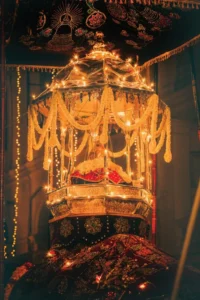
In the late 18th Century, the old practice of the yearly road pageant was revived by King Kirthisri Rajasinghe, and this has continued ever since. At that time, there were already in existence four peraheras, collectively called the Esala Perahera, dedicated to the nation’s guardian deities. These were held to invoke the help of the deities of the four Devales for victory in war and success in secular undertakings and to seek blessings of the gods to bestow farmers with rain to cultivate their crops. Today it is considered to be the main significance of the Esala Perahera. The Esala Festival covers 14 days and begins on the first day after the new moon in August. For five nights in the four Devales, processions are conducted within the temple premises with flag bearers, drummers, and torchbearers. On the sixth night, the four temple peraheras emerge from their temple compounds and take to the street. This is the start of the procession known as Kumbal Perahera, held for five more nights. The four peraheras converge at the Temple of the Tooth Relic, where the Dalada Maligawa Perahera joins the pageantry. Initially keeping a low key, with the temple chiefs wearing only their traditional white court dress to walk in the procession, more and more elephants are added to the perahera with each succeeding night. On the eleventh night, the perahera bursts into a rhapsody of color to express devotion’s ecstatic enthusiasm. Called the Randoli Perahera on accounts of the palanquins added to the procession, which in the days of old, bore queens from the royal household, it is staged for the next four nights and will climax on the full moon night of August. After the cannonball boom and the conch shell blast have resounded, and the whip crackers have cleared the streets, the flag bearers step forth in single file, each carrying the standard of different provinces and temples. At the helm of the gathered cast assembled at the main temple, gate is the Peramuna Rala, a Kandyan chief-tain representing the administration of the entire gamut of the ‘Rajakariya’ – the feudal system. Sitting astride a caparisoned elephant, he begins the procession at the auspicious hour. He is attired in the traditional Kandyan costume, and he carries in his hand the silver metallic cylinder bearing the all-important sannasa, called Lekam Mitiya. The royal title deed and edict pertaining to all the lands bestowed and the duties of each holder of the land have to be discharged in favor of the temple at the risk of forfeiture.

The richly garbed elephant he strides on belongs to the royal elephant stables. The man following his atop another elephant is the one charged with the responsibility for the welfare of all the king’s elephants. He is known as Gaja Nayake, the keeper of tamed elephants. His jacket is rich in embellishments and red in color and bears ancient motifs of the Sri Lankan kingdom. His matching waistcoat is the same color and design as is his curved headdress, and he brandishes the henduwe or ankusala, the silver goad used to control the elephant.

Drums and dance to enthrall the watching devotees with the magic of movement and music enter the frame. First to come is the Hewisi, the men who, with their high-pitched flutes known as horannawes, once traditionally served as the royal announcers at momentous occasions. Wearing white cloth wrapped tightly with a broad red slash, which extends up to their chests, are also the Thammettam drummers who use a set of twin drums with two curved cane drum sticks. Bedecked elephants, in vivid and varied hues, start appearing in twos or threes at regular intervals. While they swing rhythmically to the beat of the tantalizing drums, joining the parade are the flame throwers, forming a fiery ring with their fire torches around their bodies with a dexterity born of practice. Accompanying them are the Raban dancers. Twirling the Raban, a circular shaped drum, with one hand, they then deftly place it on the many slender poles they hold in their other hand. As their confidence rise, they raise the thin poles with the spinning raban on top and place it on their heads. They put one end of the pole into the tuft in their headwear and sway and dance hands-free to the sound of the beating drums.
It’s now the turn of the Uddekki dancers who get the name of the musical instrument they use. It’s a small hand drum in the shape of an hourglass about seven inches in length. The sides of the percussion instrument both bear drum skin. To obtain pitch variations, the strings are tightened, and the drummer dances while he plays it, and on top of it, he also sings. The Uddekki dancer is dressed in a silver color beaded jacket, which winds around his neck. He wears elaborate frills in red at the waist. His headwear consists of a white turban with a colorful gold colored border. Bracelets and amulets are worn on his wrists and arms. Next is the turn of the Pantheru dancers, bearing one of the oldest instruments in the music business. It is a tambourine minus the drum skin, with small cymbals attached around its circumference. It is held in one hand, and it is played by shaking it or striking it with the other hand making a jingling sound of metal clinking. The myth has this as the one used by the Gods to celebrate their battlefield victories over the Asuras, the demons. Following suit on earth, Sinhala kings used to jangle it to raise the triumphant cry over their enemies in war.

Now hugging the firelight shed by the flare bearers who stand like street lamps are the crème de la crème: the Ves Dancers performing the hallmark of Kandyan dancing at its best. Of all the dance troupes, the Ves dancers approach their art with religious fervor and treat it with religious respect. They dance in honor of the Sri Dalada with their bodies facing the venerated object, singing as they do the many hosannas while dressed in an elaborate costume containing over 16 different parts. The most essential item in the regalia without which the dancer loses his legitimacy to dance the sacred dance of Ves is the Ves Thattuwa. Made out of silver and brass, its engraved designs symbolize the Sun, Buddhism, the Gods, and Kings and bear thirteen brass bo leaves, which hang dangling from ear to ear. Following behind the extravaganza of dance is the Kariya Karawana Korale. He is the man who bears on his costumed puffed shoulders the entire responsibility of the pageant and is the second most important man after the Diyawadana Nilame. He is also responsible for the proper functioning of the Dalada Maligawa, including the kitchen. As he walks in the perahera, he is accompanied by a retinue of temple functionaries, dancers, and drummers. Amidst the song and dance, next comes the moment when the sacred object of a people’s faith, the nation’s priceless treasure, the sacred Tooth Relic of the Buddha. Enshrined in a golden casket and borne aloft on the back of a majestic tusker, takes center stage on the public road before the worshipful gaze of a devout public. Its holy presence stills the air with serenity. It invokes the full gush of reverence, giving rise to a roar of ‘sadhu, sadhu, sadhu – expressions of spontaneous adoration as the sacred faith enshrined in a people’s heart freely breaks out.
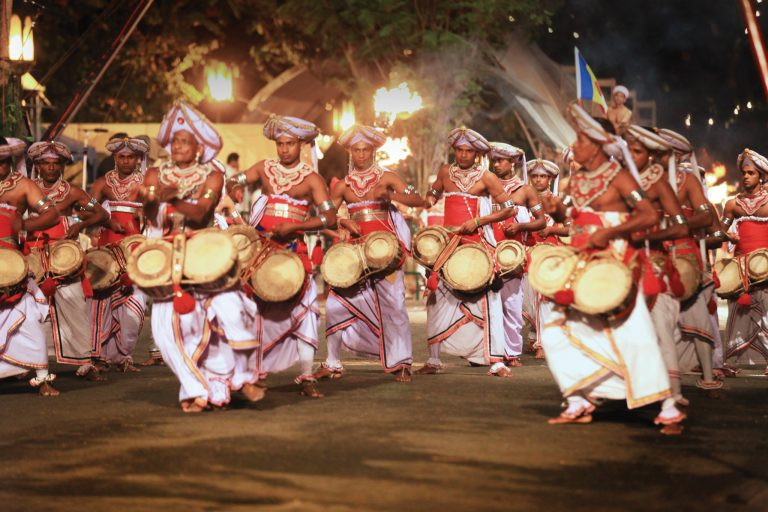
Enthralling performances by the dancers and drummers are part of the grand pageant.

Before the public, the tusker proudly stands, swaying gently to the rhythm of the music adorned with a golden garb encrusted with hundreds of luminous beads that glitter in the spotlight. For many years now, the Tooth Relic has not been taken out due to security and other reasons. What is paraded today is the replica of the casket but still does not diminish the fervor of the spectators, for faith transcends reality, and belief reign supreme.
Walking behind the casket bearing the tusker is the Kavi maduwa, descendants of the poets of old who entertained the king with poetry, art, and wit. They formed the king’s art circle, the Royal literati. Following the Kavi Maduwa walks the conductor of the entire perahera orchestra, the man of the hour; the Diyawadana Nilame. He is dressed in his Randoli best, the colorful and formal Mul Adhuma. His power as the sole arbiter ceases the moment he disrobes his costume, and the old saying ‘clothes maketh man’ applies to him literally, for, without his uniform, he is like Samson shorn of his air. Another troupe of Ves dancers is now before him dancing in his honor as their forefathers used to dance before the king two hundred years ago. They perform the same dance, follow the same motions and sing and dance their vannams facing him as he approaches. Behind the Nilame comes the Gam Vidanas, the village heads. With the last of the Gam Vidanes passing by, it signals the end of the Sri Dalada Perahera. But still, the entire pageant is not yet over.
In the trail of the Sri Dalada follow the four peraheras of the nation’s four guardian deities. The first perahera to come is the perahera dedicated to God Natha. God’s color is yellow, and the elephants are all dressed in yellow. This perahera is followed by the perahera of God Vishnu, and the color blue now pervades the scene. Next is the perahera dedicated to God Kataragama, and the elephants and the participants are dressed in red. The last perahera is devoted to Goddess Paththini whose color is translucent and represented by the color white. No female dancer is allowed to perform in any of the peraheras. Still, in the Paththini perahera, since the deity is female, an exception has been made, and women dancers join in on the act.
The Kandy Esala Perahera is a grand pageant that showcases the island’s millennia-old traditions and customs. It represents the legacy of the Dalada Vahansa in Sri Lanka and the great dedication of her people to protect and worship the Sacred Relic.
exploresrilanka.lk EXPLORE SRI LANKA | AUGUST 2021
Explore Sri Lanka April 2024
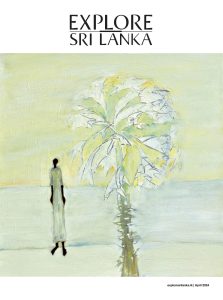
- Terms & Conditions
- Privacy Policy
© 2023 BT Options. All Rights Reserved.
Tuesday, 22 Jan 2019 --> Last Updated : 2024-04-08 21:48:00
Group News Sites
Sunday Times
Tamil Mirror
Middleast Lankadeepa
Life Online
Home delivery
Advertise with us
Mobile Apps

Mon, 08 Apr 2024 Today's Paper

Kandy Perahera is a unique symbol of Sinhala Buddhist identity - Ven. Godagama Mangala Thera
8 August 2017 12:05 am - 0 - {{hitsCtrl.values.hits}}

In the aftermath of historic Kandy Esala Perahera, Viharadhipathi of Rangiri Dambulu Rajamaha Vihare Ven. Godagama Mangala Thera speaks about its importance in terms of Sinhala Buddhist culture. He stressed that the Perahera should be viewed not only for its beauty and pageantry but also for the meaning associated with it. The excerpts of the interview:

"We insist that opportunities should be given for domestication of elephants for cultural purposes. In the past, some families used to keep elephants as an emblem of their social status. "
How do look at the significance of Kandy Esala Perahera as a feature of Sinhala –Buddhist culture?

So, he was encouraged to have exposition of the Tooth Relic at such places of Dhamma discourses. After that, it was paraded along streets people thronged. People, out of their immense devotion, started to make illustrations of stories in Buddhist literature including Jataka stories to display along with Perahera. Having seen this, more and more people flocked to the scene. People started creation of recitals as a mark of their devotion. All in all, Perahera, originated during the Anuradhapura era, is associated both with national and religious identity of people. It kept on evolving.
According to the reports of Fa Hien who visited Sri Lanka during the 3rd century BC, it had been detailed out how people responded to Dalada Perahera. It has been described how the streets were decked and prepared, and Jataka stories depicted. Dalada Perahera is a feature depicting the cultural identity of Sinhala nation.
In the Kandyan era, Dalada culture was built along with Perahera. It includes dancing and music performances. Sri Lankan people used the event to showcase their cultural richness. There were different social groups formed for the provision of different services to the conduct of Perahera. For example, one group specialized in drum beating for the occasion, and another dancing. During the Kandyan period, even reconciliation is reflected in Perahera to an extent. The cultural link between Hindus and Buddhists is projected through Perahera in some aspects.
It reflects cultural link between Buddhist and Hindus in some aspects
Traditional families willingly contribute their service to perahera, even top professionals such as doctors hailing from these families perform, there is a meaning beyond beauty of perahera, if you could elaborate it further....
As for Kavikara Maduwa, travelling in the front portion of Perahera is there. Recitation and instrument playing are done according to Hindu culture. Hindu influence is visible in processions associated with four Devales. Initially, during the Kandyan era, there was no Perahera in view of the exposition of Tooth Relic. It was there in view of four Devales. After the establishment of Higher Ordination (Upasampada), brought from Siam, it was done at the request of Ven. Upali Thera and the Mahanayake Theras of Asgiriya Chapter. There is Dalada culture. Music of recitation and instrument playing is meant to rouse devotion to Buddhism but not mere musical taste.
Kandyan dance plays a major role in Perahera. We find ves netum, Pantheru netum etc. Today, we find various dancing troupes being created as a phenomenon of Perahera. It is a cultural development of society. Actually, we find various songs of devotion being created and sung, featuring Buddhist virtues. That way, a music tradition has also been born. Ancient dancing methods, prevailed among Sinhala people, have also been added as a feature to this. In that sense, Perahera serves as an event showcasing cultural richness and dignity of our people. Foreign scholars have seen the beauty of this. They have read it beyond beauty and pageantry. We can see it by reading their papers. It is a cultural event founded upon core Buddhist values.
In Buddhist culture, we find novel features added in recent times, such as Pichchamal Poojawa etc. Do you find any novel features being associated with Perahera?
Actually, offering of Jasmine or Pichchamal Poojava is an expression of people’s devotion to Buddhist religions by deed. We cannot completely rule out the existence of such venerating modes during the time of the Buddha. When the Buddha visited any principality at that time, people thronged to see him with flowers. It has evolved to what is practised in our society today. As for Dalada Perahera, we do not find totally novel features. For every cultural activity associated with Perahera, there is a clan. There were attempts in the past to add novel features to Perahera for political ends. Now, it is not found. In fact, Perahera’s traditional identity is maintained. As for Kataragama Perahera, it is there reflecting Hindu culture in main. Alongside, we find features of Kandyan dancing attached to it. Womenfolk are given the pride of place in Peraheras of Pattini Devale.There is nothing wrong with all that. However, if a feature associated with Kataragama Perahera is introduced to Kandy Perahera, it will be a compromise of traditional complexion. Therefore, it is not done.
There are social clans or groups providing various services to Perahera. With the evolution of social order, do you face any barrier in getting such services in today’s context?
There is no such major impact in obtaining services of any clan. These clans or groups have upheld their traditions associated with Perahera from the time of ancient kings. They have carved out their niche in Perahera. Traditionally, it is obligatory for them. It has not changed. Some try to add new features in addition to all these traditional aspects.
SL people use Perahera to showcase their cultural identity
There should be opportunity for domestication of elephants for cultural activities, we have to be very cautious in applying alien concepts in the local context.
Actually, how keen is the present generation of these traditional families in extending their services to Perahera activities?
It is not an issue. Today, Kandyan dancing has been introduced to school curricula. As a result, other students outside the traditional circle also studied it. Still, traditional families play a major role. Recently, there was a survey on them and their current status in society. It is interesting that some of these family members perform their artistic talents at Perahera despite them being top professionals today. I found even medical professionals performing ‘Ves Netum’ or mask dancing. It means they have not given it up their roles despite their high social standing
Could you provide some more details related to it?
There is a book compiled in this regard. Proudly, they speak of their traditional roles. Still, they command a lot of respect from the authorities of Buddhist temples and Devales. In society, there might be some attitude problems. In the field of art, they have not been alienated, though. There are as many as 25 family lines in respect of dancing performances. We have another 24 family lines linked with instrument playing for Perahera. They come forward to make their contribution to Dalada Perahera despite their current positions in society. For example, the Amunuguma family is there. They still perform their artistic talents at Perahera.
However, Veddah Chief once said they were faced with an issue of collecting bee’s honey from the wild to be offered to Dalada Maligawa because of some laws. How do you see this?
Actually, some environmentalists have raised issues. It has even caused a problem in finding enough elephants for Perahera. We have to be cautious in the application of western concepts and laws in their entirety in the local contexts. Environmentalists and animal rights activists apply such alien concepts in their entirety to the local situations, regardless of practical realities. It has invited unnecessary issues. Elephants and tuskers were paraded in Peraheras from the time immemorial. It is not a phenomenon created overnight. It happened even during the Anuradhapura era. At that time, elephants had been used as a warring force. We have to readjust these concepts in line with our cultural ethos and values. That is the problem faced by the Veddah community. They complain of losing their right to use the wild because of new laws. We have to remodel western laws to suit to the local context. Otherwise, we will lose these traditions. Existence of such traditions add colour to a society. If we believe in reconciliation, we will have to respect all.
Environmentalists and animal rights activists live on NGO funding raise issues relate to using elephants
New tradition of music and instrument playing born due to perahera, sustainable solution has to be found for the dearth of elephants, last time, the dearth of elephants was a big issue. how did you manage this time .
It was managed this time. Some elephants were released from the Pinnawala elephant orphanage for the purpose. It is not a sustainable solution, though. We have to find a workable solution. We wonder why these animal rights activists raise this in relation to Perahera. There is no honesty here. Those who are living on NGO funding for survival, raise this matter. When an elephant is taken in Perahera, it is not harassment. In fact, it attributes dignity to the animal concerned. Elephants, meant for the purpose, are fed properly. They are even taken on carpets. They are bathed. Now, the lack of pachyderms has impacted the cultural activities of Buddhist places of worship. So, we suspect whether this is aimed at assaulting the Buddhist culture.
What is the sustainable solution you propose for this?
It is difficult to get elephants released from their kraals to be used in Perahera. They are not tame enough for it. We have to train them to be taken in procession through a crowded place amidst music playing and all. Elephants, tamed properly, walk majestically in Peraheras, unlike the ones immediately released from the orphanage. We insist that opportunities should be given for domestication of elephants for cultural purposes. In the past, some families used to keep elephants as an emblem of their social status. When elephants are given to such families, they are well looked after. They are not harmed.
How did look at the Perahera just concluded?
Today, there is an institution set up in Pallekelle for dancing training in view of Perahera. Also, Dalada Maligawa has launched a programme to lend a helping hand to traditional craftsmen and performers. It has sorted out the issue involving elephants. We will be able to sustain Perahera with its unique traditions. We are optimistic about the future. We commend the role played by the incumbent Diyawadana Nilame in this regard.
"Initially, during the Kandyan era, there was no Perahera in view of the exposition of Tooth Relic. It was there in view of four Devales. After the establishment of Higher Ordination (Upasampada), brought from Siam, it was done at the request of Ven. Upali Thera and the Mahanayake Theras of Asgiriya Chapter. There is Dalada culture. Music of recitation and instrument playing is meant to rouse devotion to Buddhism but not mere musical taste"
Comments - 0
Add comment Comments will be edited (grammar, spelling and slang) and authorized at the discretion of Daily Mirror online. The website also has the right not to publish selected comments.
Name - Reply Comment
RECOMMENDED

Loss-making SMIB faces political pressure in recovering loans

Baltimore Bridge Collapse: MV Dali, SL authorities anchored in mystery?
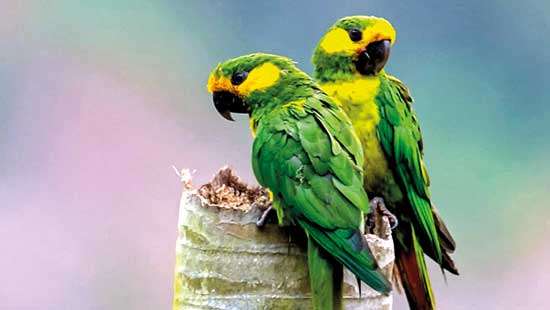
Has Sri Lanka become a potential hub for the illegal wildlife trade?
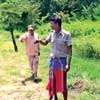
Spotlight on Moragahakanda Development Project Moragolla villagers lose livelihoods and down to one meal a day
According to villagers from Naula-Moragolla out of 105 families 80 can afford

Ambitious Sri Lankan jobseekers ‘trafficked into Ukraine war zones’
Is the situation in Sri Lanka so grim that locals harbour hope that they coul
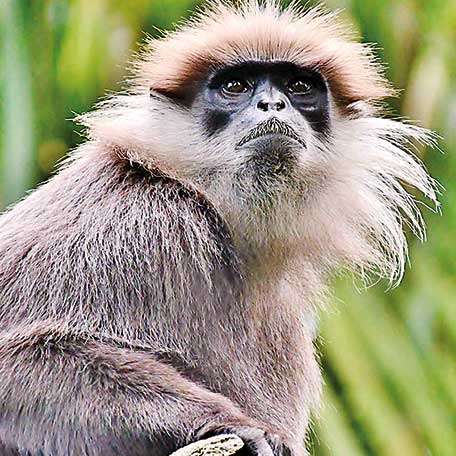
Western purple-faced langurs see blue!
A recent post on social media revealed that three purple-faced langurs near t
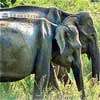
Spotlight on Uda Walawe National Park Jumbos starve due to scarcity of fodder, grazing cattle
It was a little past noon when we reached the Uda Walawe National Park. We we
Most Viewed in News
Exporters call for urgent action on rupee appreciation.

No decision to declare April 15 as public holiday
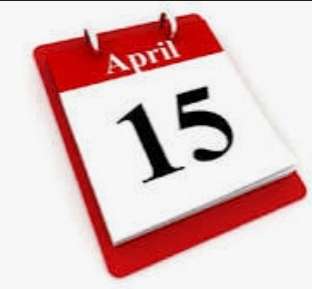
Foreigners overstaying visas and doing odd jobs

Damitha, her husband arrested by CID

Attempt to dissolve Parliament for snap General Election fails

Ship was carrying US toxic waste to Sri Lanka: Report

MIRROR CRICKET
Today's headlines.


AmazingLanka.com
Exploring Sri Lanka
Sri Dalada Perahera : Kandy Esala Perahera (මහනුවර ඇසල පෙරහැර)
- Events Article

There are special religious programs conducted in the Dalada Maligawa on every Full Moon Poya day where large numbers participate. Apart from these daily, weekly, and monthly ceremonies, there are four major ceremonies held every year. They are;
- Aluth Sahal Mangailaya;
- Avurudu Mangallaya;
- Esala Mangallaya; and
- Karthika Mangallaya.
Of these, the most important is the Esala Mangallaya. Esala, according to the Sinhalese Calendar, is the month of July/ August This is the month in which Kandy gets into a festive mood. Shopkeepers and hoteliers pile up their stock to cater to the massive crowds that throng the city. Maligawa and its premises are gaily decorated and are illuminated with strings of lights, including the esplanade.
These lights burn throughout the night. A few days before the Esala Perahera, A Kapa, a sapling from a tree that sheds milky juice is erected in each of the four Devales. On the 5th day, The Kumbal Perahera begins and goes on for 10 consecutive nights when the sacred relic casket is taken around the streets of Kandy accompanied by exotically costumed dancers and drummers.
These dance forms vary. The most popular dance forms are the Ves , Udekki , Pantheru , Naiyandi , Hewisi , Savang, and Leekeli and the dancers with years of experience reveal their dexterity in the performance of their respective dances.
The most colorful Perahera is the last Randoli Perahera which falls on the Esala Full Moon Poya day. On this day, at the auspicious time, the Perahera starts. The Diyawadana Nilame in full traditional Kandyan dress will enter the inner chamber to receive the Perahera Karanduwa containing the Buddha Relics.
The Mahanayake Thero will place the relics casket on the velvet cloth clonintricately embroidered with gold and silver, held by both hands by the Nilame. As he steps out of the chamber bearing the relics casket, the crowd with one heart and one voice starts chanting sadhu, sadhu, sadhu, and the chorus will go on while the Esala Perahera begins.

A red and yellow floor spread ( pavada ) embroidered with appliques of different hues is laid before him, and two Temple functionaries will start strewing jasmine flowers on it while the Diyawadana Nilame, carrying the casket, will slowly tread over the pavada . In front of him, two hand torches are held by bearers while the kavikara maduwa sing songs in praise of the Dalada. The Nilame walks past the Udamale and begins to descend the wooden staircase goes past the digge and ambarawa and finally arrives at the place where the tusker is waiting to carry the casket.
The casket containing the Buddha Relics is always carried by a tusker decorated with a is magnificent dress embedded with colored bulbs and generally looks more colorful than the other caparisoned elephants numbering over 75 who take part in the Esala Perahera. The decorated ransivige is placed on the back of this tusker and the relic casket is placed inside it on, a velvet cushion, by the Nilame. After the Nilame and the Mahanayake Thero strew jasmine flowers on the casket the tusker arrives at the wahalkada followed by the Nilame.
The Esala Perahera proper begins as the cannon booms. Leading the Perahera is the band of whip crackers who crack their whips in a rhythmic pattern announcing it that the Esala Perahera is on. Immediately following are two o flag bearers carrying the two flags of the Sathara Korale (known as Ira Kodiya) embossed with the symbols of the sun and the moon indicating the wish that this Perahera be held until the sun and the moon last. Next comes the Peramunerala, attired in the traditional white dress and riding a caparisoned elephant and carrying the sannasa , the royal charter to hold the Perahera. Following him is the Gajanayake, the Maligawa official in charge of the elephants, elegantly dressed in traditional Kandyan dress carrying the ankusaya the instrument by which elephants are controlled.

The crowd is impatiently waiting to get a glimpse of the tusker carrying the relics casket. It’s a wonderful sight to see the tusker dressed in a decorated costume and brilliantly illuminated bearing the ransivige in which the Perahera Karandawa rests on a velvet cushion, with garlands of jasmine flowers hanging dangling above it and strings of lights flickering all the time, tread over the pavada in assured steps under the canopy held over the ransivie by 16 able-bodied men with poles and strings. As the karanduwa passes by, the crowd, stands up and with their hands clasped together chant sadhu, sadhu, sadhu thereby paying their homage to the Sacred Tooth Relic.
The focus of the crowd then moves towards the Diyawadana Nilame who, attired in his traditional Kandyan costume, slowly walks by under a large e embroidered umbrella held by a Vidane of the Maligawa and flanked by two troupes of Ves dancers whose performance is a lovely sight to see.
Over 75 caparisoned elephants, 1000s of dancers and drummers, hundreds of flag bearers, and torchbearers take part in each of the Peraheras. The Maligawa Perahera is followed by the Devala Peraheras in the order of Natha, Vishnu, Kataragama, and Pattini under the direction of the respective Basnayake Nilames, who in their traditional Kandy costumes, take part in the Esala Perahera.
After the day of the Esala Perahera, it is customary for the Diyawadana Nilame and the Basnayake Nilames of the four devalas to report to Her Excellency the President that the Esala Perahera was satisfactorily conducted.
As the Esala Perahera draws to an end, the onlooker is apt to conclude that it is nothing but the sheer ingenuity of the Buddhists from ancient times to have organized the country’s talents in arts and g crafts including drumming and dancing into a cultural pageant of such magnitude and offer it to ‘” the Sacred Tooth Relic of Lord Buddha as a form of veneration.
Related Articles
- Kingdom of Kandy
- List of Ancient Heritage Sites of Sri Lank The history of the Sri Daladawa (sacred Tooth Relic)
- Some Historical Places Associated with Dalada Maligawa
- The Sacred Tooth Relic – the Palladium of the rulers
- History and legend of the Maha Maluwa
- Odyssey of the ‘Danta Dhatu’
- The origin of Sri Dalada Perahera tradition
- Esala festival and the Dalada Perahara
- Sri Dalada Perahara in the unforgettable days gone by
- Sri Dalada Perahera (Kandy Esala Perahara)
- Knox’s impressions of the Kandy Perahara
- Kandy – The Last Kingdom of Sinhale
Traveling Directions to Kandy
Kandy can be reached from Colombo on the old Colombo – Kandy road (option 1) which is scenic but heavy in traffic, especially on Fridays and Sundays. However, the new Central Expressway (option 2) has opened up a new route which is longer but less cumbersome.
Share this:
Leave a reply cancel reply.
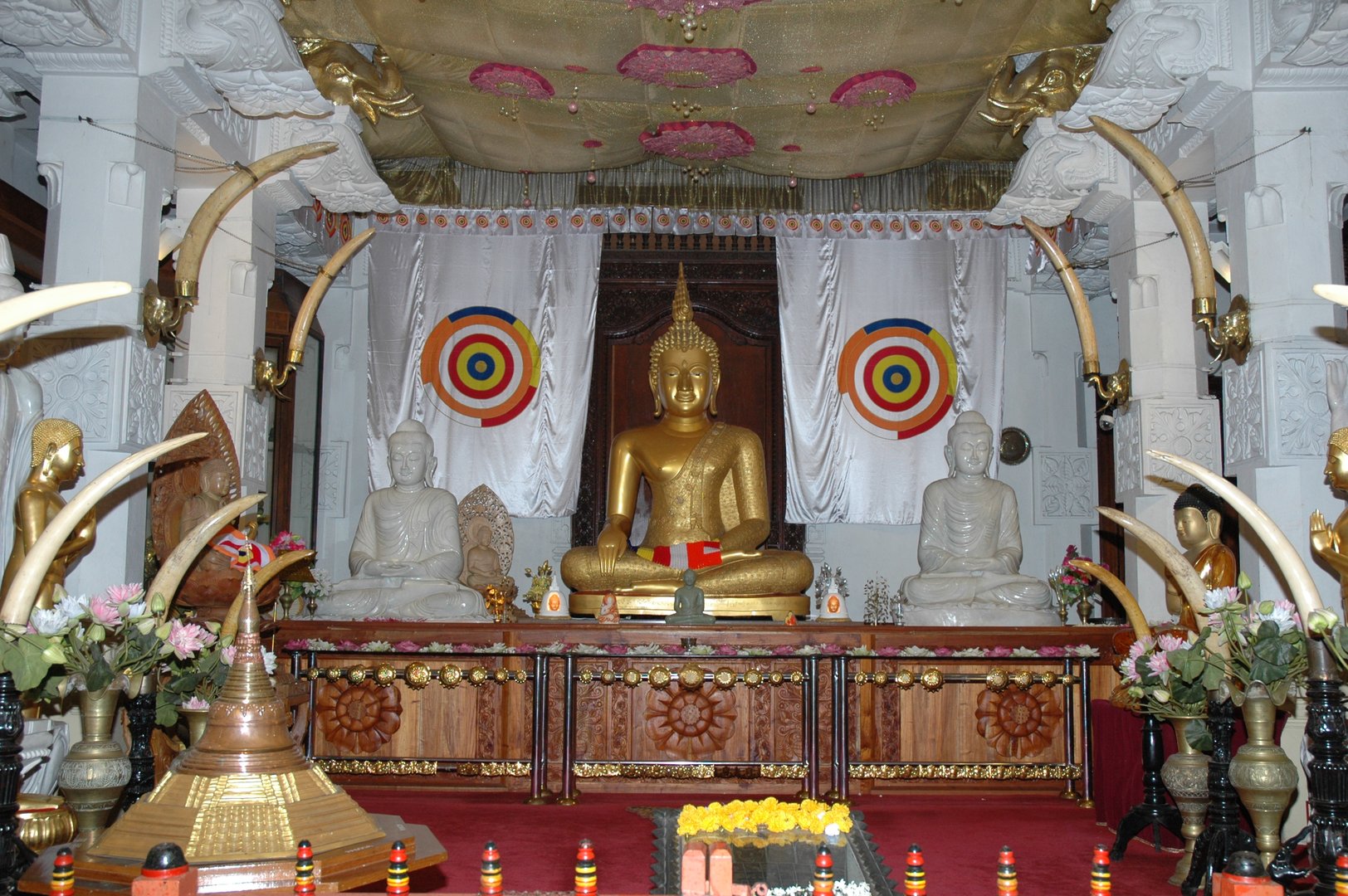
Kandy Esala Perahera – the Festival of the Tooth of Lord Buddha
Kandy esala perahera - the festival of the tooth of lord buddha.
The Esala Perahera in Kandy is one of the oldest and grandest of all Buddhist festivals in Sri Lanka, featuring dancers, jugglers, musicians, fire-breathers, and lavishly decorated elephants. This is held in Esala (July or August) which is the month that is believed to commemorate the first teaching given by the Buddha after he attained enlightenment. The Kandy Esala Perahera lasts for ten days while various festivities can be witnessed right throughout. The Sinhalese term ‘Perahera’ means a parade of musicians, dancers, singers, acrobats and various other performers accompanied by a large number of caparisoned Tuskers and Elephants parading the streets in celebration of a religious event.
Kandy Esala Perahera photo gallery
Heading title, kandy’s ten-day esala perahera is the most spectacular of sri lanka’s festivals, and one of the most colourful religious pageants in asia..
Esala Perahera (the festival of the tooth of Lord Buddha) is one of the grandest festivals in Sri Lanka and in the Buddhist world. It is held every summer in Kandy to honor the sacred tooth of Lord Buddha and to pay homage to old gods of Sri Lanka. For the people of Sri Lanka, it is a time to celebrate the country’s rich culture and history. For travelers, it is a great time to experience the distinctive tradition of this island nation and to have fun!
The Festival of the Tooth is called Esala Perahera in Sinhalese. “Esala” is the name for a lunar month occurring in July or August. The word “Perahera” means a procession or parade.
The Esala Perahera in Kandy is believed to be a fusion of two separate but interconnected “Peraheras” (Processions) – The Esala and Dalada. The Esala Perahera which is thought to date back to the 3rd century BC, was a ritual enacted to request the gods for rainfall. The Dalada Perahera is believed to have begun when the Sacred Tooth Relic of the Buddha was brought to Sri Lanka from India during the 4th Century AD.
The procession (perahera) through the streets of Kandy is held nightly throughout the festival: the first five nights, the so-called Kumbal Perahera, are relatively low-key; during the final five nights, the Randoli Perahera, things become progressively more spectacular, building up to the last night (the Maha Perahera, or “Great Parade”), featuring a massive cast of participants including as many as a hundred brilliantly caparisoned elephants and thousands of drummers, dancers and acrobats walking on stilts, cracking whips, swinging fire pots and carrying banners, while the replica casket of the Tooth Relic itself is carried on the back of the Maligawa Tusker elephant.
The Procession
The Kandy Esala Perahera begins with the Kap Situveema or Kappa, in which a sanctified young Jackfruit tree (Artocarpus integrifolia) is cut and planted in the premises of each of the four Devales dedicated to the four guardian gods Natha, Vishnu, Katharagama and the goddess Pattini. Traditionally it was meant to shower blessing on the King and the people.
Kumbal Perahera (Kumbal Procession)
The first procession of the Sacred Tooth Relic stars with the Kumbal Perhara. This is the first Kumbal Perhara shown to the infants to drive away Evil Spells and Illwill. It is a tradition that the procession parades the streets of Kandy for five days. But the Kumbal Perahara is popular and remains as an unfinished procession or a semi procession. The reason is that Nilames do not work in this procession. But the Drummers and Tuskers take part without any ceremonial costumes.
Randoli Perahera (Randoli Procession)
This could be seen only with the procession of the Sacred Tooth Relic and parade the streets for whole five days which is a tradition. In the days of the Kings the Chief Queen of the Kings paraded in this procession in Palanquins. As the participation of the Queens was not proper to the procession of the Sacred Tooth Relic they were stopped but a palanquin is taken in the procession as an honor to the Queen. Today it is taken as the last item of the procession.
Maha Randoli Perahera (Grand Randoli Procession)
The Maha Randoli Perahara is the last Procession. It is the grandest event of the festival. The Tuskers come with garlands and decorated with ceremonial costumes. The Diyawadana Nilame adds a novel glamour to the procession by wearing newly stitched costume.
5 TIPS for the festival
1. Reserve hotels well in advance because it is a peak season during the festival and bookings can be heavy. 2. Though you can watch the great procession in the street with the local people, it is highly recommended that you book a seat (around USD 100 each) in a viewing gallery in advance to get a good view. 3. Bring some drinks and snacks as the procession is long (usually 3-4 hours) and most of the restaurants are close to enable seating to view the parade. Alcohol is not sold on Poya (full-moon day of the month) days. But tea and coffee are available. And Thambili ( king coconut water ) is a safe and refreshing option. 4. The best time to see the procession is on the last two nights when you can see more than a hundred elephants wearing colorful clothes of silk and fairy lights striding amongst the musicians, fire jugglers, and torch bearers. It would be best if you watch the entire ten-night procession though. 5. Be prepared and patient. It is almost impossible to avoid crowds of people during the Esala Perahera. Instead of getting mad about it, you can choose to be calm and maintain a peace of mind.
Kandy Esala Perahera Dates in 2017
1st Kumbal Perahera – July 29th 2017 2nd Kumbal Perahera – July 30th 2017 3rd Kumbal Perahera – July 31st 2017 ?4th Kumbal Perahera – August 01st 2017 5th Kumbal Perahera – August 02nd 2017 1st Randoli Perahera – August 03rd 2017 2nd Randoli Perahera – August 04th 2017 3rd Randoli Perahera – August 05th 2017 4th Randoli Perahera – August 06th 2017 5th Randoli Perahera – August 07th 2017 Maha Randoli Perahera – August 08th 2017
MysrilankaTravel
Kithulgala white water rafting, you may also like, anuradhapura, horton plains world’s end, nuwara eliya, polonnaruwa, leave a comment cancel reply.
Save my name, email, and website in this browser for the next time I comment.
This site is protected by reCAPTCHA and the Google Privacy Policy and Terms of Service apply.

The Majestic Esala Perahera Festival: A Celebration of Sri Lanka’s Rich Cultural Heritage
Are you searching for an adventure that immerses you in rich cultural heritage? Consider the Esala Perahera Festival , one of Sri Lanka’s most vibrant celebrations dating back centuries .
This blog post will guide you through this majestic event, from its historic origins to its grand procession and festivities . Ready for a journey into Sri Lankan culture like no other? Let’s dive in!
Table of Contents
Key Takeaways
- The Esala Perahera Festival is a vibrant celebration in Sri Lanka that showcases the country’s rich cultural heritage.
- It has a long history dating back centuries and has evolved over time, blending ancient traditions with modern influences.
- The festival is deeply rooted in Buddhism and includes religious rituals and ceremonies to honor the Sacred Tooth Relic of Buddha.
- The grand procession of the festival features ornately decorated elephants, traditional dancers, musicians, and firebreathers.
- Despite changes due to colonial rule and modernization, efforts have been made to preserve the festival’s traditional aspects while ensuring accessibility for all.
- The Esala Perahera Festival attracts tourists from around the world and has gained global recognition for its cultural significance.
Historical Background of the Kandy Esala Perahera
Legends and myths surround the origins of the Kandy Esala Perahera, which has evolved over time due to colonial influence and modernization into a spectacular event that attracts global recognition today.
https://www.youtube.com/watch?v=v_TjXkAdHwU
Legends and Myths
Old tales tell us about this festival. One tale talks about the gods in the sky . Long ago, they needed rain for their crops to grow . They made loud music and held a parade to ask help from God Indra , the god of rains.
The Esala Perahera happened because of this legend . Now it has more meaning. Today, people honor Buddha’s Tooth Relic during the parade too! This relic is very special to Sri Lankan Buddhists and it gets carried through Kandy city every year at this time.
Evolution of the Festival
The Esala Perahera festival in Kandy, Sri Lanka has a long and fascinating history . It has evolved over the centuries, blending ancient traditions with modern influences . The festival started many years ago as a simple religious procession to honor the Sacred Tooth Relic of Buddha .
However, with time, it has grown into a grand affair that showcases Sri Lanka’s rich cultural heritage . The influence of colonial rule brought changes to the festival, making it more elaborate and spectacular.
Today, the Esala Perahera attracts tourists from around the world and is recognized globally for its cultural significance . Despite these changes, efforts have been made to preserve the traditional aspects of the festival while ensuring accessibility for all.
Influence of Colonial Rule
During the colonial rule, the Esala Perahera festival in Sri Lanka faced some changes and challenges. The Portuguese, Dutch, and British administrations had different impacts on the festival.
They imposed restrictions and regulations that affected the traditional practices of the procession. For example, during British colonial rule , they banned the use of firecrackers due to safety concerns.
Additionally, there was an effort to secularize the festival by removing its religious elements. However, despite these influences, the Esala Perahera managed to adapt and evolve while maintaining its cultural significance .
Another effect of colonial rule was increased exposure to Western culture through trade and colonization. This led to a fusion of local traditions with foreign influences in aspects such as costumes and music.
As a result, you can see hints of European styles in some performances during the procession.
Modernization and Spectacle
The Esala Perahera festival has also evolved with modernization , becoming a spectacular event that combines tradition with innovation . Over the years, the festival has embraced new technologies and techniques to enhance the grandeur of the procession.
Today, you can expect to see colorful LED lights illuminating the night sky as elephants adorned in magnificent regalia make their way through the streets. The addition of fire breathers and acrobats adds an element of excitement and awe to the performances.
Despite these modern touches, the festival maintains its cultural significance and spiritual essence, keeping alive Sri Lanka’s rich traditions for future generations to cherish.
Increased Tourism and Global Recognition
The Esala Perahera festival in Kandy, Sri Lanka has gained increased tourism and global recognition over the years. Thousands of local and international visitors flock to witness this grand cultural spectacle .
This not only boosts the economy but also puts Sri Lanka on the map as a must-visit destination for adventure travelers seeking to immerse themselves in rich cultural experiences. The festival’s unique blend of sacred rituals, traditional dances, vibrant music performances, and awe-inspiring parade with majestic elephants has garnered attention worldwide.
It serves as a testament to the beauty and vibrancy of Sri Lankan heritage, attracting people from all walks of life who want to be part of this extraordinary celebration.
Preservation of Tradition and Accessibility
The Esala Perahera festival in Kandy, Sri Lanka is not only about celebrating the rich cultural heritage of the country but also about preserving and promoting traditional arts and customs .
The festival’s organizers place great importance on maintaining the authenticity of the event by ensuring that ancient rituals are faithfully followed and traditional costumes are worn during performances.
At the same time, they strive to make the festival accessible to all by organizing events that cater to different interests and preferences. This includes offering various viewing options for visitors , such as grandstands or standing areas, so that everyone can enjoy the parade comfortably.

Rituals and Preparations for the Esala Perahera
Elaborate preparations are made for the Esala Perahera, including religious rituals and ceremonies that add to the sacredness of the festival.
Elaborate Preparations
The Esala Perahera festival in Kandy, Sri Lanka involves elaborate preparations to ensure a memorable and awe-inspiring experience for all attendees. Here are some key aspects of the preparations:
- Intricate Planning : The organizers meticulously plan every detail of the festival, from the route of the procession to the performances and ceremonies involved.
- Decorations and Lighting : The streets of Kandy are adorned with beautiful decorations, colorful lights, and traditional ornaments to create a festive ambiance.
- Construction of Stages : Various stages are constructed along the parade route for cultural performances and religious rituals to take place.
- Rehearsals and Training : Dancers, drummers, musicians, and other performers undergo rigorous rehearsals and training sessions to perfect their art and ensure seamless performances during the festival.
- Elephant Care : Special attention is given to the well-being of the elephants participating in the procession. They are bathed, fed, and cared for by skilled mahouts (elephant handlers) to ensure their welfare throughout the festival.
- Security Measures : Strict security measures are put in place to maintain order and ensure the safety of both participants and spectators.
Religious Rituals and Ceremonies
The Esala Perahera festival in Kandy, Sri Lanka, is a celebration deeply rooted in Buddhism and rich with religious rituals and ceremonies. During the 10-day festival, devotees come together to pay homage to the Sacred Tooth Relic of Buddha, which is enshrined at the Sri Dalada Maligawa temple in Kandy. Here are some of the religious rituals and ceremonies that take place during the Esala Perahera:
- Offering of flowers and incense : As a sign of respect and devotion, participants offer fresh flowers and light incense sticks at the temple.
- Chanting of prayers : Monks chant Buddhist scriptures and prayers throughout the festival to invoke blessings and cultivate peace and serenity.
- Lighting oil lamps : Oil lamps are lit to symbolize enlightenment and dispel darkness. This ritual is believed to bring good fortune and protect against negative influences.
- Almsgiving : Devotees offer food, clothing, or other necessities to monks as an act of generosity and merit-making.
- Procession of the Sacred Tooth Relic : The most sacred moment of the festival is when a replica of the Sacred Tooth Relic is paraded through the streets on a majestic elephant. This represents the presence of Buddha’s teachings among the people.
- Blessings by monks : Throughout the procession, monks bless attendees by sprinkling holy water and reciting blessings.
- Offerings made by performers : Dancers, drummers, musicians, firebreathers, and other performers also make offerings at each major stop during the parade as a way to seek blessings for their talents.
- Participation in religious ceremonies : Visitors have opportunities to participate in traditional Buddhist ceremonies such as meditation sessions or listening to dharma talks by esteemed monks.
- Reflection and self-purification : Many participants use this time for personal reflection, seeking forgiveness for past actions, purifying their minds, and committing to practicing kindness and compassion.
- Receiving blessings from relics : Some participants have the opportunity to receive blessings from relics believed to be connected to Buddha or other revered figures in Buddhism.
Parade and Procession of the Perahera
The Parade and Procession of the Perahera captivates spectators with its grandeur, as traditional dancers, musicians, and firebreathers mesmerize the crowd while adorned elephants lead the way.
Grandeur and Scale of the Parade
The Esala Perahera festival in Kandy, Sri Lanka, is known for its grandeur and scale . The procession features majestic elephants adorned in ornate regalia , accompanied by dancers, drummers, and traditional musicians .
It’s a mesmerizing display of vibrant colors and electrifying performances that create an unforgettable atmosphere. The parade follows a strict order, with different groups representing various aspects of Sri Lankan culture and history.
Thousands of local and international visitors gather to witness this awe-inspiring event, immersing themselves in the richness of Sri Lanka’s cultural heritage.
Traditional Costumes and Attire
The traditional costumes and attire worn during the Esala Perahera festival are absolutely breathtaking. The performers dress in vibrant and ornate outfits that reflect the rich cultural heritage of Sri Lanka.
Dancers wear colorful sarongs, intricately embroidered jackets, and headdresses adorned with feathers and jewels . Musicians showcase their talent while wearing traditional white robes known as “amude.” The elephants, which play a central role in the procession, are beautifully decorated with bright fabrics, elaborate jewelry, and large ceremonial umbrellas.
It is truly a sight to behold as these majestic creatures parade through the streets accompanied by dancers, drummers, and firebreathers.
Mesmerizing Performances and Cultural Displays
The Esala Perahera festival in Kandy, Sri Lanka, is known for its mesmerizing performances and vibrant cultural displays . During the grand procession, you’ll be captivated by the sight of majestic elephants adorned with elaborate regalia .
Accompanying them are talented dancers who perform traditional dances to the beat of drummers and musicians playing traditional instruments . The atmosphere is electrifying as firebreathers showcase their skills, adding an element of excitement to the celebration.
This festival offers a unique opportunity to experience the rich cultural heritage of Sri Lanka through dazzling performances that will leave you in awe.
Cultural Significance of the Esala Perahera
The Esala Perahera holds great cultural significance, promoting unity and harmony among the Sri Lankan people. It showcases the rich traditions of the country and serves as a reminder of its deep-rooted Buddhist heritage.
Discover more about this mesmerizing festival and its profound impact on Sri Lankan culture.
Religious and Cultural Importance
The Esala Perahera festival holds great religious and cultural significance in Sri Lanka. It is a time when the country comes together to honor its rich heritage and traditions. With Buddhist origins, the festival pays homage to the Sacred Tooth Relic of Buddha, which is revered as a symbol of spiritual power and protection.
The procession showcases different aspects of Sri Lankan culture , from traditional dance performances to vibrant music displays . Through this festival, locals express their deep-rooted beliefs and values while promoting unity and harmony among diverse communities.
The Esala Perahera serves as a reminder of the country’s cultural identity and plays a crucial role in preserving and safeguarding these traditions for future generations to cherish.
Promotion of Unity and Harmony
The Esala Perahera festival in Sri Lanka not only celebrates the country’s cultural heritage but also promotes unity and harmony among its diverse population . People from different ethnicities and backgrounds come together to witness this grand event, showing that despite their differences, they can unite in appreciation of their shared traditions .
The procession itself represents various aspects of Sri Lankan culture and history, showcasing the rich tapestry of the country’s identity. This celebration serves as a reminder that no matter our individual beliefs or backgrounds, we can all come together to celebrate and embrace our shared humanity.
Visitor Experience and Impact
Visitors to the Esala Perahera are treated to a mesmerizing display of traditional dance, music, and cultural performances that truly showcase Sri Lanka’s rich heritage. Read on to discover the economic and tourism impact this festival has on the country and how initiatives are being taken to safeguard and promote it for future generations.
Tips for Attending as a Visitor
Here are some tips for adventure travelers attending the Esala Perahera festival in Kandy, Sri Lanka:
- Plan your visit during the festival : The Esala Perahera is usually held in July or August , so make sure to check the exact dates and plan your trip accordingly.
- Arrive early to secure a good viewing spot : The parade attracts large crowds, so it’s best to arrive early to find a good spot along the procession route. You don’t want to miss any of the action!
- Dress appropriately : The festival is a religious event, so it’s important to dress modestly and respectfully . Wear comfortable clothes and shoes as you may be standing for long periods of time.
- Bring sunscreen and a hat : The festival takes place outdoors, and Sri Lanka can get quite hot during this time of year. Protect yourself from the sun by applying sunscreen and wearing a hat.
- Stay hydrated : It’s essential to stay hydrated throughout the day, especially if you’re going to be out in the sun for an extended period of time. Carry a water bottle with you and drink plenty of fluids.
- Observe local customs and etiquette : Show respect for the cultural traditions by following local customs. Be mindful of where you stand or sit, avoid touching sacred objects without permission, and refrain from taking photographs during religious rituals.
- Immerse yourself in the experience : Take in the sights, sounds, and smells of the festival by fully immersing yourself in the experience. Listen to traditional music, watch mesmerizing dance performances, and enjoy the vibrant atmosphere.
- Try local cuisine : Take advantage of being in Sri Lanka by trying traditional dishes at local food stalls or restaurants near the festival grounds. Don’t miss out on experiencing the flavors of Sri Lankan cuisine!
Economic and Tourism Impact
The Esala Perahera festival has a significant impact on the economy and tourism in Sri Lanka. With thousands of visitors from around the world attending this grand event, it brings in revenue for local businesses such as hotels, restaurants, and souvenir shops.
The festival also creates job opportunities for various industries, including transportation, hospitality, and entertainment sectors. Additionally, the increased tourism during the festival helps to promote Sri Lanka as a cultural destination globally.
This not only boosts the country’s economy but also encourages the preservation of its rich cultural heritage for future generations to experience and enjoy.
Initiatives for Safeguarding and Future Promotion
To ensure the preservation and future promotion of the Esala Perahera festival, several initiatives have been implemented. The Sri Lankan government has taken steps to safeguard this cultural heritage by providing financial support for its organization and maintenance.
In addition, there are ongoing efforts to train and mentor young artists in traditional forms of music, dance, and craftsmanship, ensuring that these skills are passed down to future generations.
Furthermore, educational programs have been established to raise awareness about the significance of the festival among local communities and visitors alike. These initiatives not only protect the integrity of the event but also contribute to its continued popularity as a vibrant celebration of Sri Lanka’s rich cultural heritage.
The Esala Perahera festival is a vibrant and captivating celebration of Sri Lanka’s cultural heritage. With its grand procession, traditional performances , and religious significance , it offers visitors a unique and immersive experience.
This festival not only showcases the rich traditions and customs of the country but also plays an important role in preserving them for future generations to appreciate.
1. When does the Esala Perahera Festival take place?
The Esala Perahera Festival takes place in the month of July or August, according to the full moon in Sri Lanka’s cultural city of Kandy.
2. What is the significance of the Esala Perahera Festival?
The Esala Perahera Festival is a celebration of Sri Lanka’s rich cultural heritage and is held to honor the Sacred Tooth Relic of Lord Buddha, believed to be housed in Kandy.
3. What can I expect at the Esala Perahera Festival?
At the festival, you can witness a grand procession featuring beautifully adorned elephants, traditional dancers, drummers, fire performers, and various religious rituals.
4. Can anyone participate or attend the Esala Perahera Festival?
Yes, anyone can attend and enjoy the festivities of the Esala Perahera Festival as it is open to locals and tourists alike. However, participating in certain religious rituals may require permission or involvement from designated authorities.

Melanie Cho is a passionate traveler, storyteller, and cultural enthusiast with a heart that bridges the landscapes of Korea and Sri Lanka. As a 28-year-old Korean woman who spent her formative years splitting time between these two captivating worlds, Melanie’s unique upbringing ignited her love for exploration and connection. Her intimate knowledge of both cultures enables her to share authentic insights, captivating stories, and practical tips that inspire fellow adventurers to embark on unforgettable journeys.
Similar Posts

Discover the Diversity of Butterflies in Sri Lanka
Are you an adventurer seeking to explore the vibrant world of butterflies in Sri Lanka? With a rich diversity of 248 known butterfly species, this tropical island is a must-visit for all nature enthusiasts. Our article will take you on a fascinating journey through Sri Lanka’s unique butterfly habitat, highlighting endemic species and conservation efforts….

Exploring the Ancient Stupas in Sri Lanka: A Buddhist Architectural Marvel
Curious about ancient architecture and its historical significance? Sri Lanka’s stupas, considered Buddhist architectural marvels, are sure to captivate your interest. This article delves into the enchanting world of these structure, providing insights on their design, importance in Buddhism, and how you can explore them. Unearth the wonders of sacred relics and centuries-old stories waiting…

Discover the Fascinating Wonders that Make Sri Lanka Famous
Are you planning your next adventure and curious about what makes Sri Lanka so special? Known as the “Pearl of the Indian Ocean,” this vibrant country presents an array of wonders waiting to be explored. This blog post will take you on a journey through ancient cities, breathtaking landscapes, rich culture, and tantalizing cuisine which…

Ultimate Guide to Glamping in Sri Lanka: Discover the Best Luxury Camping Spots
Ready for a luxurious getaway in the wild? Sri Lanka’s burgeoning glamping scene offers travelers the perfect blend of adventure and comfort. This comprehensive guide lets you in on the best luxury camping spots dotting this tropical paradise, providing everything from booking tips to must-see nearby attractions. Let’s dive right into your next glorious vacation!…

Exploring the Best Dive Sites in Sri Lanka
Intrigued by the prospect of a surreal underwater adventure? Sri Lanka, surrounded by azure waters housing over 26 breath-taking dive sites, could be your next scuba diving destination. This article takes you on a journey through the best dive spots this tropical paradise has to offer, along with valuable insights on diving schools and optimal…

The Ultimate Guide to Wellness Retreats in Sri Lanka
Feeling overwhelmed and in need of a restorative getaway? Sri Lanka, an island surrounded by the Indian Ocean, is renowned for its luxurious wellness retreats. Our ultimate guide offers insights into the top-notch sanctuaries that promote holistic health and relaxation. Dive into this article to uncover your next dream destination to rejuvenate body, mind, and…
Leave a Reply Cancel reply
Your email address will not be published. Required fields are marked *
Save my name, email, and website in this browser for the next time I comment.
Journey of a Thousand Memories
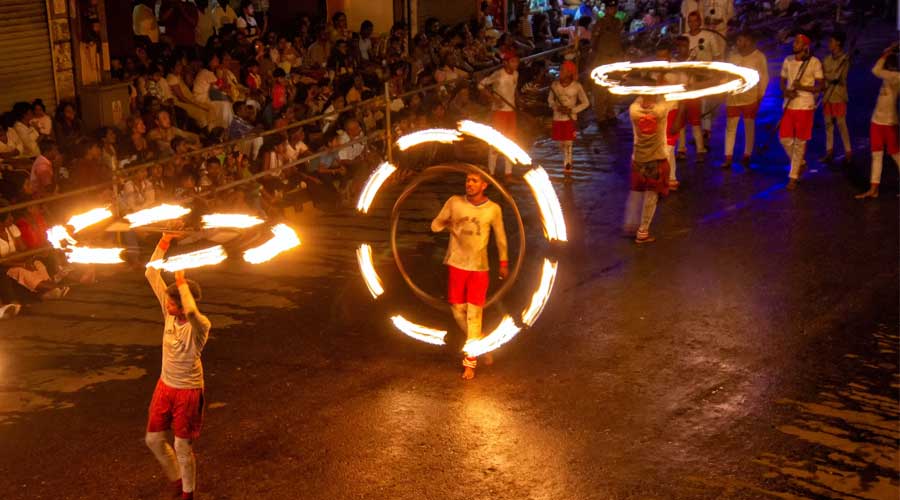
Kandy Esala Perahera
Kandy Esala Perahera: Unveiling the Splendor of Sri Lanka’s Grand Festival
The Kandy Esala Perahera is a vibrant and captivating cultural extravaganza that takes place in the city of Kandy , Sri Lanka. Regarded as one of the grandest and most significant festivals in the country, it combines religious devotion, historical traditions, and stunning pageantry. Lasting for ten nights, the Esala Perahera is a spectacle that draws thousands of locals and tourists alike, creating an unforgettable experience. This article delves into the history, significance, and elements that make the Kandy Esala Perahera an unparalleled celebration, offering insight into the rich cultural heritage of Sri Lanka.
Historical Background
The Origins of the Kandy Esala Perahera:
The genesis of the Kandy Esala Perahera can be traced back to the 4th century BCE, during the reign of King Kirthi Sri Meghavarna. It is believed that the Perahera, in its early form, was an ancient ritual performed to invoke rainfall and prosperity. Over time, the Perahera became intrinsically linked to Buddhism, incorporating elements of the sacred Tooth Relic of the Buddha, which was brought to Sri Lanka from India in the 4th century CE.
The Arrival of the Tooth Relic in Kandy:
In the 16th century, Kandy became the last bastion of independent Sri Lankan kingdoms, as the maritime colonial powers exerted control over other regions. It was during this period that the sacred Tooth Relic found its way to Kandy. In 1595, after numerous relocations, the Tooth Relic was enshrined in the newly constructed Temple of the Tooth (Sri Dalada Maligawa) in Kandy, under the patronage of King Vimaladharmasuriya I. This pivotal event marked the beginning of the Kandy Esala Perahera as an annual procession.
The Development of the Kandy Esala Perahera:
During the reign of King Rajasinghe II (1635-1687), the Perahera gained prominence and grandeur. The king initiated significant improvements to the procession, expanding its scale and introducing diverse cultural elements. The Perahera began to feature elaborately adorned elephants, drummers, dancers, fire performers, and various other traditional performers. King Rajasinghe II’s contributions played a vital role in transforming the Perahera into the magnificent spectacle we witness today.
Symbolism and Significance:
The Kandy Esala Perahera encompasses profound symbolism and spiritual significance. The majestic tusker carrying the golden casket, which houses the sacred Tooth Relic, symbolizes the protection and prosperity of the nation. The Perahera acts as a conduit between the people and the divine, fostering religious devotion, cultural unity, and social harmony among diverse communities in Sri Lanka. It also serves as an essential platform for passing down traditional arts and crafts from generation to generation.
Challenges and Preservation:
Throughout history, the Kandy Esala Perahera faced numerous challenges, including colonial suppression and cultural assimilation attempts. Yet, it persevered and endured, with successive generations of Sri Lankans dedicated to its preservation. In 1980, the Perahera was inscribed on UNESCO’s Representative List of the Intangible Cultural Heritage of Humanity, recognizing its exceptional value to the world.
Significance and Religious Importance
Religious Significance:
The Kandy Esala Perahera holds profound religious significance for Buddhists. The sacred tooth relic, believed to be one of the Buddha’s teeth, is enshrined within the Temple of the Tooth (Sri Dalada Maligawa) in Kandy. During the Perahera, the relic is placed upon a majestic tusker, adorned with richly decorated attire, and paraded through the streets. This procession symbolizes the power of Buddhism and the importance of protecting and venerating the sacred relic.
Rituals and Ceremonies:
The Perahera spans several nights, each filled with diverse rituals and ceremonies. The opening ceremony, known as “Kap Situveema,” involves planting a sanctified young jackfruit tree to signify the commencement of the festival. This is followed by the ‘Kumbal Perahera,’ a series of nightly processions featuring whip-crackers, drummers, flag bearers, and traditional dancers. As the festival progresses, the intensity and grandeur reach their peak during the final nights, known as the ‘Randoli Perahera.’ The streets come alive with elaborately costumed performers, fire dancers, acrobats, and a multitude of caparisoned elephants.
Among the various captivating elements of the Kandy Esala Perahera are the Diya Kepeema and Day Perahera, two mesmerizing events that exude a unique charm and spiritual significance. Let us delve into the enchanting world of Diya Kepeema and Day Perahera, and explore the magic they bring to the grand festivities.
Diya Kepeema: The Illuminated Spectacle
Diya Kepeema, which translates to “the ceremony of lighting lamps,” is a breathtaking display of illuminated creativity. This event takes place several nights before the main Kandy Esala Perahera and sets the stage for the grandeur that follows. During Diya Kepeema, the sacred Temple of the Tooth Relic and its surrounding areas are adorned with thousands of oil lamps, creating a resplendent spectacle that illuminates the night sky.
The Diya Kepeema ceremony holds deep spiritual significance. The lighting of the lamps symbolizes the dispelling of darkness and the arrival of light, both literally and metaphorically. The glowing lamps represent the devotion of the people towards Lord Buddha and the hope for a bright future. As the golden light flickers against the backdrop of the sacred temple, it creates an ethereal ambiance that fills the hearts of onlookers with tranquility and awe.
Day Perahera: The Majestic Procession
The Day Perahera is a vibrant daytime procession that forms an integral part of the Kandy Esala Perahera. It takes place on the final day of the grand festival, marking the pinnacle of the celebrations. The Day Perahera features a multitude of captivating elements, including beautifully adorned elephants, traditional dancers, musicians, fire breathers, whip crackers, and flag bearers.
At the forefront of the Day Perahera is the magnificent Maligawa Tusker, the most revered elephant of the Sacred Temple of the Tooth Relic. Adorned in elaborate regalia and draped in colorful fabrics, the tusker carries the sacred relic casket, which is the focal point of veneration during the procession. The elephant’s majestic presence, combined with the rhythmic beats of drums and the melodious tunes of flutes and trumpets, creates an atmosphere of grandeur and spiritual fervor.
As the Day Perahera progresses through the streets of Kandy, spectators are treated to a sensory feast. Dancers sway gracefully, depicting traditional rituals and cultural tales, while fire performers amaze the crowd with their daring acts. The vibrant costumes, intricate masks, and exquisitely crafted floats add to the visual splendor, showcasing the diverse cultural heritage of Sri Lanka.
The Significance and Unity of Diya Kepeema and Day Perahera
Diya Kepeema and Day Perahera hold immense cultural and religious significance. They bring together people from all walks of life, transcending social barriers, as devotees and spectators alike immerse themselves in the spiritual ambiance of the festivities. These events foster a sense of unity and communal harmony, emphasizing the shared heritage and traditions of Sri Lanka.
The Kandy Esala Perahera, with its captivating Diya Kepeema and majestic Day Perahera, serves as a testament to the rich tapestry of Sri Lankan culture. It is a celebration of faith, devotion, and the artistic prowess of its people. Visitors who witness the spectacle are left with indelible memories of a truly unique experience, one that ignites the imagination and touches the soul.
Cultural and Artistic Splendor:
Beyond its religious importance, the Kandy Esala Perahera showcases Sri Lanka’s rich cultural heritage. The procession features a kaleidoscope of traditional dancers performing various forms of dance, such as Kandyan, Sabaragamuwa, and Udarata. The rhythmic beats of drums, the resounding sounds of conch shells, and the melodic tunes of flute players create an enchanting atmosphere. The Perahera is also an opportunity for artisans and craftsmen to showcase their skills, with beautifully crafted costumes, jewelry, and decorative ornaments adding to the visual spectacle.
Community Participation and Devotion:
The Kandy Esala Perahera is not only a religious event but also a celebration that unites communities across Sri Lanka. Devotees from all walks of life gather to witness the procession, offering their prayers and seeking blessings. Many families engage in religious observances, including fasting and participating in acts of merit, as a mark of devotion. The Perahera also attracts a significant number of tourists, who are captivated by the grandeur and spiritual aura of the event.
Preparations and Rituals
Months before the Esala Perahera, extensive preparations are made to ensure its smooth execution. The organizing committee, comprising religious leaders, officials, and volunteers, meticulously plans the event. Elaborate costumes, intricately designed decorations, and beautifully adorned elephants are prepared to dazzle the spectators.
The festival begins with the Kap Situveema, a ritual that plants a sanctified young jackfruit tree within the premises of each devale (shrine). This ritual signifies the announcement of the forthcoming Perahera. Following this, a series of religious observances and ceremonies take place, including the planting of young coconut plants and the distribution of herbal preparations to elephants.
The Grand Procession
The highlight of the Kandy Esala Perahera is the grand procession that parades through the streets of Kandy for ten consecutive nights. The procession features various cultural elements and meticulously choreographed performances, creating a mesmerizing spectacle.
The Perahera begins with whip-crackers clearing the way, followed by flag bearers representing each devale. Drummers set the rhythm, while traditional dancers perform intricate routines. Fire dancers, acrobats, and stilt walkers add an element of excitement and skill to the procession.
The majestic tuskers, adorned with vibrant costumes and intricate ornaments, are the center of attention. The Maligawa Tusker, carrying the sacred tooth relic casket, is the most revered among them. As the procession advances, devotees offer flowers, light lamps, and chant prayers, seeking blessings and protection.
Cultural Significance and Tourism
Cultural Showcase:
The Kandy Esala Perahara is a captivating showcase of Sri Lankan culture and traditions. The processions include various dance forms such as Kandyan dances, fire dances, whip dances, and drumming ensembles. These performances display the diversity and vibrancy of the country’s artistic heritage, captivating both locals and visitors alike. The intricate handcrafted costumes, vibrant masks, and elaborate headpieces worn by the dancers reflect the unique craftsmanship and attention to detail that has been passed down through generations.
Tourism and Economic Impact:
The Kandy Esala Perahara has emerged as a major tourist attraction, drawing thousands of visitors from across the globe. Tourists flock to Kandy during this festival to witness the grandeur and immerse themselves in the cultural ambiance. The influx of visitors provides a significant boost to the local economy, benefiting the hospitality industry, transportation services, and handicraft vendors. Additionally, the increased exposure of Sri Lanka’s cultural heritage through the festival helps promote the country as a prime destination for cultural tourism.
Preservation and Challenges:
While the Kandy Esala Perahara continues to thrive and captivate audiences, preserving its authenticity and cultural significance poses challenges. The delicate balance between tradition and modernity, as well as the need to ensure the ethical treatment of elephants involved in the processions, are ongoing concerns. Efforts are being made to address these challenges by incorporating sustainable practices, promoting animal welfare, and safeguarding the cultural heritage associated with the festival.
Related Posts
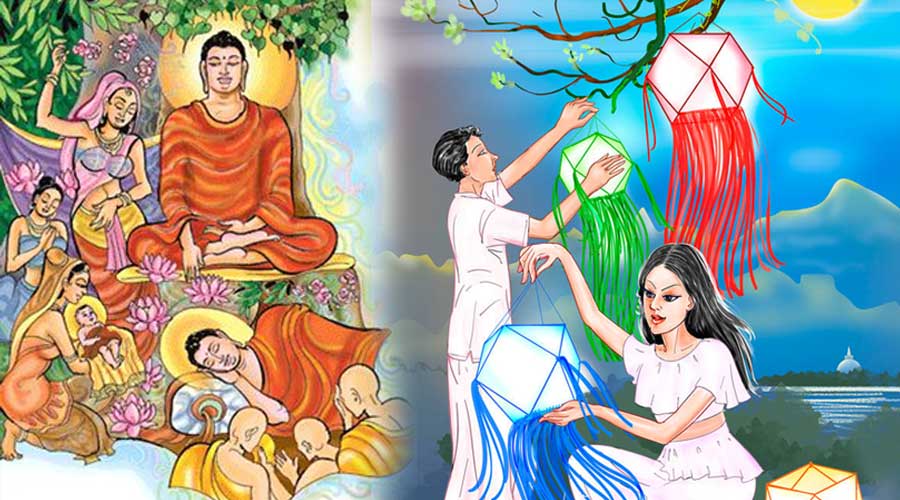
Vesak Poya Day
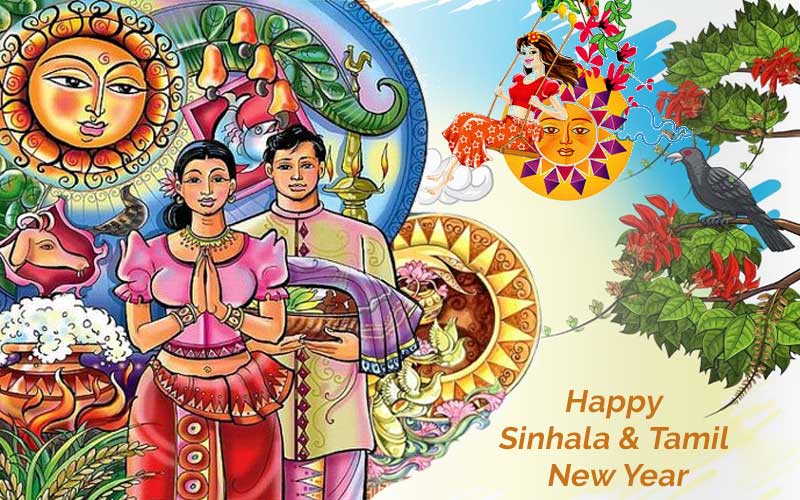
Sinhala and Tamil New Year
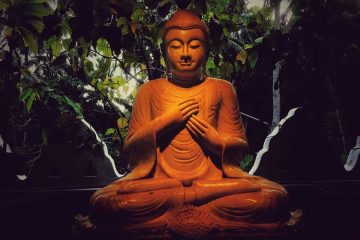
Esala Full Moon Poya Day
[…] cultural festivities in countries like Sri Lanka. The highlight of these celebrations is the Esala Perahera, a grand procession held in Kandy. It features beautifully decorated elephants, traditional […]
Leave a Reply Cancel reply
Your email address will not be published. Required fields are marked *
Save my name, email, and website in this browser for the next time I comment.

The Ultimate Africa Travel Bucket List
- A Brief History
- Sri Lankan Culture
- Climate and Weather
- Best Tourist Destinations
- The Best Time To Visit
- What to Take
- What to Wear
- What to Eat
- What to Drink
- Health Facilities
- Vaccinations for Sri Lanka
- Geography of Sri Lanka
- Religions in Sri Lanka
- Driving in Sri Lanka
- Travel by Car / Rent a Car
- Travel by Bus
- Travel by Train
- Travel by Trishaw (Tuk-Tuk)
- Taxi Hire in Sri Lanka
- Guided Tours in Sri Lanka
- Customs Regulations
- Sri Lankan Visa – Tourist
- Banking & Business Hours
- Sri Lanka Holidays – 2019
- Sri Lankan Currency
- Exchange Rates
- Sri Lanka Currency & Banks
- Antiques & Furniture Export
- Colombo District
- Galle District
- Kandy District
- Nuwara Eliya District
- Ratnapura District
- Anuradhapura District
- Polonnaruwa District
- Sri Lankan Nature
- Arugam Bay Beach
- Bentota Beach
- Beruwala Beach
- Galle Beach
- Hikkaduwa Beach
- Jaffna Beach
- Kalkudah Beach & Passekudah Bay
- Kalpitiya Beach
- Koggala Beach
- Mount Lavinia Beach
- Negombo Beach
- Nilaveli Beach
- Tangalle Beach
- Trincomalee Beach
- Unawatuna Beach
- Weligama Beach
- Sacred Sites and Religious Attractions
- Ancient Cities
- Parks and Gardens
- Camping Holidays
- Rock Climbing
- Wildlife Tours & Safaris
- Boat Safaris
- Water Sports
- Hiking and Trekking
- Cycling Vacations
- Playing Golf
- Ayurveda & Spa Resorts
- What to Buy
- Shopping Tips
- Sri Lanka Duty Free
- Submit an Article
- Advertise With Us
The Esala Perahera in Kandy (Kandy Perahera)
The famous Kandy Perahara (Esala Perahara / the festival of the tooth) is one of the most important annual Buddhist celebrations takes place in Sri Lanka and it is also considered as one of the most spectacular religious processions in Asia. Sri Lankans from all over the country and an ever increasing number of foreign visitors annually gather in Kandy to witness this colourful pageantry.
The highlight of Kandy Perahera is got to be the colourful and multi-faceted processions that feature traditional dancers, drummers in colourful traditional costumes, fire jugglers, whip crackers, torch bearers, hundreds of well decorated elephants and thousands of pilgrims. The elephants are usually adorned with lavish garments. Elephants have always played a prominent role in Sri Lankan psyche. During in procession, on the back of the largest elephant, a golden casket carries a replica of one of the teeth of Lord Buddha that was brought to Sri Lanka after his salvation (The relic is kept in the Temple of the Tooth and a replica is displayed in a Golden Casket on top of a brightly decorated elephant).
This is an experience not to be missed. It is held in every July/August during Esala full moon, so the perahara is also referred to as the Kandy Esala Perahera (after the lunar month in which it is held). Though celebrated as a whole, the main Perahera procession is an amalgamation of five separate ones with different names and identity.
Sri Lanka hotels and especially the hotels in Kandy are chock full of tourists and local visitors during this time and usually help organise tickets and other essentials for the event.
Brief History of the Kandy Esala Perahera
Legend has it that the Buddha’s tooth was brought to Sri Lanka in the 3rd century AD, hidden in the tresses of a princess. The ceremony has happened every year since around 300 AD. The pomp and pageantry that surrounds the perahera today was initiated by King Kirthi Sri Rajasinha in the 18th-century.Today, pilgrims visit the golden temple, Sri Dalada Maligawa, throughout the year to catch a glimpse of the golden casket which holds the venerated relic.
Getting a seat for Kandy Perahera
There are several ways.
- Book in advance: expensive, but a good place. The Queens hotel is a good example
- Go looking around town on the day. For this you need to be sure of the route and how to get a good price. Nearly all the shops on route rent out chairs, balcony space, or shop windows for visitors from both abroad and other towns.
- Sit on the pavement all day, and guard a place. Free, but it must be hard work sitting for so long.
Related Stories
Sri lankan sinhala & tamil new year, temple of the tooth (sri dalada maligawa), the poson festival.

Which Resort in Mauritius is Right for You?
How to choose the right african safari, jungle getaway in the heart of cameroon, best spots to see wildlife in the u.s., california desert travel tips & insights, popular categories.
- Americas 19

Pellentesque et felis ut nisi dapibus tempor. Curabitur tempor efficitur nisl nunc. Nunc feugiat mi tellus, a feugiat tempor consequat ac nisi dapibus tempor.
Quick Access
Enjoying my content.
Make this choice and from now on, you will forever be a part of every adventure!

Unveiling the Splendor of the Kandy Dalada Perahera in Sri Lanka

In the heart of Sri Lanka, amidst the ancient city of Kandy, a majestic spectacle unfolds every year that draws pilgrims, locals, and travelers alike into a world of vibrant culture and spiritual devotion. The Kandy Dalada Perahera, often referred to as the “Esala Perahera”, stands as one of the island nation’s most cherished traditions. Rooted in centuries of history, this grand festival pays homage to the sacred tooth relic of Lord Buddha, while simultaneously captivating attendees with its dazzling parade, elaborate costumes, and intricate rituals. As a traveler, immersing yourself in this awe-inspiring event is a gateway to understanding the heart and soul of Sri Lanka.
The Historical Significance of Kandy Dalada Perahera: A Tapestry of Legends
The Kandy Dalada Perahera traces its origins back to the 4th century when the sacred tooth relic of Lord Buddha was brought to Sri Lanka. Nestled within the Sacred Temple of the Tooth (Sri Dalada Maligawa) in Kandy , this relic symbolizes not only the spiritual essence of Buddhism but also the sovereignty and protection of the nation’s rulers.

The festival itself began in the 3rd century BC, during the reign of King Kirthi Sri Meghavarna, a time when the country was faced with a severe drought and famine. In an attempt to end the calamity, the king initiated a grand procession of the sacred tooth relic, which miraculously brought forth rain and prosperity. Thus, the Kandy Dalada Perahera was born as a celebration of both faith and thanksgiving and is held in the month of August every year.
The Grandeur of the Procession: A Feast for the Senses
The Kandy Dalada Perahera is an unparalleled visual extravaganza, showcasing the heritage, art, and spirituality of Sri Lanka. The procession, held over ten nights, is a mesmerizing display of over a hundred beautifully adorned elephants, drummers, dancers, and traditional musicians. The vibrancy of costumes and the precision of choreography leave spectators awestruck, each moment a symphony of color and movement.

You can browse through amazing photos from Sri Lanka and purchase some for yourself by visiting our profile @ iStock by Getty Images .
Procession of Dalada maligawa
Whip crackers and fireball dancers.
The whipcrackers are the first to walk in the procession followed by fire dancers. This symbolizes thunder and lightning before rain. Since the Dalada perahera was first started during a prolonged drought to bless the land with rain, the symbolic tribute to the rain gods is still leading the procession. Also, the sound of whipcrackers is like a siren to clear the route for the oncoming procession while fireballs provide light in the darkness.
Did you know?
These whipcrackers, fire dancers, and most of the performances in the Dalada perahera are performed by a lineage specialized in that particular talent. Since the talent is taught from generation to generation you will see representation of younger, middle, and older generations within one act.

The fireball dance performance is a sight to see. It’s magnificent, exciting and at the same time a bit scary. They are literally playing with fire. After seeing how tactfully they discipline fireballs to create art, one could say they are the “Sri Lankan fire benders”.
Flagbearers and Swordbeares
After whipcrackers and fire dancers, Buddhist flag bearers walk in the procession. The National flag of Sri Lanka is carried in front of the Buddhist flag bearers stating that Sri Lankans are united despite being a muti-rational, multi-religious, and multicultural country.
Followed by the Buddhist flag bearers come the state flag bearers. These flags represent the 12 states and 9 counties that were under the rule of the Kandyan kingdom. During the era of the Kandyan kingdom, the heads of the relevant states and counties bore the flags in the Esala perahera as a sign of their loyalty to the King. You will notice there are flags made out of brass alongside the cloth-made flags which is an interesting point to notice since it’s not very common to see flags made out of copper.
The next in line in Dalada perahera are Sword bearers. They symbolize protection for the Sacred Tooth Relic.
In the history of Sri Lanka, The Tooth Relic has played the beacon of power in the country. To become accepted as a king in Sri Lanka, it wasn’t enough just to have an army and power. The king had to have the possession of the Sacred Tooth Relic. So providing a high level of security to the Tooth Relic by the ruler of the kingdom was a priority. Even in modern days, the security of the Tooth Relic is a high priority of the government.
First Elephant; more to come
If you have been waiting for the elephants to arrive since the beginning of the procession, now you will get to see the first elephant which is colorfully dressed and decorated with lights.
Peramune Rala is the official who is sitting on the back of the first elephant in the procession. He is carrying the secretariat’s scroll inside a long silver casket. The secretariat’s scroll symbolizes the documentation of properties that were gifted to the Tooth Relic by different rulers of Sri Lanka over a long period of history.

Hewisi group - Traditional Orchestra of Sri Lanka
Following Peramune Rala is the Hewisi Group of Dalada Maligawa. You’ll hear them playing the familiar sound that you hear during the service time of Dalada Maligawa. They are the official musical ensemble of the Temple of the Tooth Relic. This traditional orchestra will bring together the sound of different Sri Lankan musical instruments like Horanewa, Thalampota, and Thammettama to form a symphony that echoes the proud history of this magnificent island to the whole white world.
The History of Hewisi in Sri Lanka runs back to the dates of the Anuradhapura kingdom when Jaya Sri Maha Bodhi arrived in Sri Lanka. So it just might be the oldest traditional orchestra in the world.
Now you will see the second elephant in the procession carrying Gajanayake Nilame who is in charge of the group of king’s elephants. Followed by Gajanayake Nilame, more and more colorful dances and beautifully dressed elephants walk in the Perahera.
More and more breathtaking dances
Water Carrier Dancers represent the purification of the route of the oncoming Tooth Relic, Coconut flower dancers symbolize prosperity and abundance, and Chamara dancers symbolize providing comfort to the Tooth Relic.
One of the highlights of the Dalada perahera is the performance by the Naiyandi Dancers. This is a significant dance of the upcountry in Sri Lanka. The dancers wear headwear in the shape of a cobra, thus giving the name of the dance. “Nai” in Sinhala means cobra. The dance is very colorful, energetic, and breathtaking.
Another such eye-binding show in the Dalada perahera is the performance by the Tambourine Dancers. This is more like a sporting event rather than a dance. The dancers rotate their tambourines at high speed, throw them high up in the air, and catch them without leaving any room for mistakes. The stunts performed by these dancers while balancing the tambourine on a thin rod are absolutely jaw-dropping.
Tambourine is called “Rabana” in Sinhala. This is a musical instrument that is often played during the Sinhala and Tamil New Year in Sri Lanka. The sound of the tambourine and the singing of the koel signals the arrival of Sinhala and Tamil New Year in April.
Get ready to move to the beat of the kettle drums (Thammettam)
When the Tammettam (Kettle drum) players group passes, you will notice that your body is moving to the rhythm effortlessly. It’s hard to resist dancing to the unique and engaging music produced by the kettle drummers. I’m sure the elephants that walk next to the drummers will agree with me fully because they can’t help dancing to the music of kettle drums too. It’s such a cute scene to see the elephants dancing in the Dalada perahera.
Before the arrival of the most anticipated iconic Kandyan dancers, a series of wonderful performances are showcased in the Dalada perahera. These include mixed folk dances, pantheru dances, and udekki dances. In between the dances, many elephants and tuskers walk in the perahera, displaying their colorfully lighted glamorous dresses.
Iconic Kandyan dancers (Ves Dancers)

The Kandyan Dancers or Ves Dancers are one of the cultural icons in Sri Lanka. Their unique dress with headwear and energetic dances to the beat of the drums is a sight to see.
Kariya Korala walks behind the first group of Ves dancers.
The arrival of the Sacred Tooth Relic
Then comes the Maligawa Tusker, carrying the Sacred Tooth Relic, which is the pinnacle of the procession, accompanied by devotees bearing offerings and torch bearers.
The Sacred Tusker: A Symbol of Reverence
Central to the procession is the Maligawa Tusker, an elephant who carries the sacred tooth relic in a golden casket. This majestic creature, draped in regal attire, embodies the intertwining of spirituality and regality. As it makes its way through the streets, devotees and spectators bow their heads in respect, participating in a tradition that bridges the gap between heaven and earth.

Diyawadana Nilame
The second troop of Ves dancers escorts the Diyawadana Nilame of Dalada Maligawa who is the protector of the Tooth Relic of Lord Buddha in Sri lanka. He is dressed in royal garments of ancient Sri Lanka. Guards holding ancient Sri Lankan weapons walk beside him. The heads of the 10 villages (Ninda gam) that belong to Dalada Maligawa walk behind Diyawadana Nilame.
With that, the procession of Dalada Maligawa ends. But it isn’t the end of Dalada Perahera.
The Procession of Sri Maha Natha Devalaya
The Procession of Sri Maha Natha Devalaya follows the procession of Dalada Maligawa. This procession pays tribute to God “Natha”, who is next in line to gain enlightenment and attain Buddhahood. God “Natha” is also known as “Maithree Bodhisathwa” or “Avalokiteshvara”.
You will see many colorful, energetic dances in this procession. And you will notice that these dancers are wearing dresses that are more vibrant compared to the dancers of the procession of Dalada Maligawa.
The Procession of Sri Maha Vishnu Devalaya
Next is The Procession of Sri Maha Vishnu Devalaya which pays tribute to God Vishnu. It is said that God Vishnu is responsible for the protection of Buddhism in Sri Lanka.
This procession is so eye-catching with the prominent blue color of the costumes of dancers and elephants. The dances are energetic and cheerful. Blue lighting perfectly compliments the blue costumes of the elephants. Just amazing!
The Procession of Sri Maha Kataragama Devalaya
After the Vishnu Devala procession starts the Procession of Sri Maha Kataragama Devalaya. This procession pays tribute to the God of Kataragama. You will see the South Indian influence on the dances of this procession.
The Kavadi dance is one of a kind. The lively beat is so engaging that you’ll find yourself dancing to the beat. Red is the prominent color in this procession. The Peacock dance is so vibrant with the glittery costumes.
Peacock is the vehicle of God Kataragama. That’s why you will see references to peacocks in the procession of Kataragama Devalaya.
The Procession of Sri Maha Paththini Devalaya
The final procession of Dalada perahera is the Procession of Sri Maha Paththini Devalaya. This procession pays tribute to God Paththini, the only female representative among the guardian deities of the Sacred Tooth Relic. You will notice that Yellow is the signature color in this procession.
Also, you will notice a lot of female dancers in this procession which is not seen in the other processions.

The end of Dalada Perahera is marked by the Palanquin carriers. Aka “Randoli wedamaweema” in Sinhala. This ushers in the closure of the event, leaving participants with a profound sense of connection to their heritage and spirituality.
The Modern Influence: A Blend of Tradition and Modernity
While the Kandy Dalada Perahera remains deeply rooted in its ancient customs, it has evolved to embrace modernity. Cultural dance troupes showcase Sri Lanka’s diverse heritage, while traditional crafts find a place in the festivities. Additionally, the perahera has become a platform for intercultural understanding, attracting visitors from around the world who come to witness and appreciate the beauty of Sri Lankan traditions.

A Timeless Celebration of Faith and Culture
The Kandy Dalada Perahera is more than just a festival; it’s a living testament to the enduring spirit of Sri Lanka.
So, attending the Kandy Dalada Perahera is not merely an event; it’s an immersion into a world of profound significance. As a traveler, you become a witness to a legacy that spans centuries, a participant in rituals that resonate with devotion, and an admirer of the artistic masterpieces that adorn the procession.
Through centuries of change, this magnificent celebration has remained a unifying force, bridging the gap between generations and cultures. As the flickering lights of torches illuminate the night and the rhythmic beats of drums reverberate through the air, the Kandy Dalada Perahera is a reminder that amidst the diversity of our world, certain traditions possess the power to unite us all in awe and reverence.
I’ll meet you next week with another “Letter” from Ceylon… Until then…
නැවත හමුවෙමු😉 ( Newatha hamuwemu = Let’s meet again)
Please share your thoughts about this post and what you would like to read about Sri Lanka in the future in the comments section.
Stay in the know with our latest updates! Subscribe to our Newsletter and be part of our vibrant community. 📩✨ #StayConnected #SubscribeNow”
Share this:
- Click to share on Twitter (Opens in new window)
- Click to share on Facebook (Opens in new window)
- Click to share on Pinterest (Opens in new window)
- Click to share on WhatsApp (Opens in new window)
Leave a Comment Cancel Reply
Your email address will not be published. Required fields are marked *
Save my name, email, and website in this browser for the next time I comment.
Table of Contents
- International edition
- Australia edition
- Europe edition
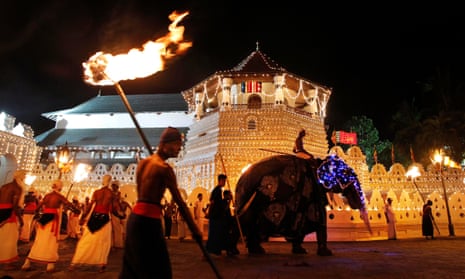
Kandy in the spotlight: war behind it, Sri Lanka's second city sees a tourist boom
The cultural capital of Kandy – controversial location for Indiana Jones and the Temple of Doom – survived Sri Lanka’s civil war relatively intact. Now it’s thriving, thanks in no small part to an infamous relic: one of the Buddha’s teeth
On a hill directly above Kandy there is a statue of Buddha in a seated posture, palms on his lap, signifying meditation. This is far from the most important shrine in this Buddhist-majority city, or indeed an unusual sight in Sri Lanka – the country is peppered with polished white or golden statues that are visible from afar, distinctive amid vegetation. Nonetheless, its proximity to Kandy makes it a good point from which to contemplate the city – and a highly Instagrammable one.
On a scorching spring afternoon, western tourists snapped photos under the indifferent eye of Buddhist monks, while one could hear distant religious chants mixed with the sounds of 90s European dance hits at a party – a scene that pretty much represents the vertiginous change happening in Sri Lanka which, less than a decade after the traumatic civil war ended, is experiencing a tourism boom.
The Buddha’s tooth
Right at the heart of the island, Kandy is the second largest city in the country after the capital, Colombo, but feels like a small town. The city officially has a population of around 125,000, according to the latest registered census in 2012, but the number has probably increased greatly. Spread out around a lake and surrounded by mountains, it is a historically significant city and arguably the country’s cultural capital: its spectacular Temple of the Sacred Tooth Relic, in which is enshrined a tooth of the Buddha – the country’s most important Buddhist relic.
The tooth is precisely the reason for the 10-day elaborate multi-procession festival happening in the city this week, Kandy’s Esala Perahera , in which a replica of the relic is paraded around the city. After six relatively modest days, proceedings escalate on the last four, culminating on the night of the poya (full moon) with thousands of Kandyan dancers and drummers, dozens of elephants dressed trunk-to-toe, colourful banners and more, in Kandy’s biggest night of the year and Sri Lanka’s most striking celebration.
The city in numbers …
500 - altitude in metres; referred to as the “hill capital,” it is itself surrounded by mountains and by the country’s extensive tea plantations.
1815 - year the last Sinhalese kingdom, of which Kandy was capital, fell to the British (after resisting the Dutch and the Portuguese for three centuries).
50 - approximate number of elephants that parade during the Esala Perahera . The number has been as high as 100.
… and pictures
This article includes content provided by Instagram. We ask for your permission before anything is loaded, as they may be using cookies and other technologies. To view this content, click 'Allow and continue' .
Kandy in sound and vision
Kandy’s most memorable cinematic appearance is on Indiana Jones and the Temple of Doom. After the Indian government reportedly found the script offensive – not without reason – the location was switched to Kandy (and England). The fictional Mayapore village, theoretically in North India, was actually filmed in a government-owned tea plantation three miles from the city, and the infamous rope bridge was built and destroyed on the nearby Victoria Dam.
History in 100 words
Kandy dates back to the early 13th century, when the ancient kingdom of Polonnaruwa collapsed and the Sinhalese people moved south. When the rest of the island fell to the Portuguese in 1505 (and, later, the Dutch), the Kingdom of Kandy maintained its grasp on independence, protected by its location in the steep hills in the middle of the country. It wouldn’t lose it until the British invaded in 1815. This isolation gave it an inward-looking, conservative character it preserves to this day.
The same inaccessibility largely protected it from suffering during Sri Lanka’s civil war. Unlike Colombo, Kandy only suffered one significant LLTE attack, a bomb outside the Temple of the Tooth which killed 17 people. Modern Kandy has continued to grow, with urbanisation sprawling up the surrounding hills, especially after the civil war ended and tourism skyrocketed.
What’s everyone talking about?
The Buddhist festival is monopolising attention this week, but more generally, Kandyans are concerned about urbanisation, which is visibly spreading in the surrounding hills, and the resulting congestion and pollution. Kumar Lopez, CEO at the Sri Lankan press institute, says the city’s daily life and even the environment have “drastically changed” since the tourism boom started. “The cool breeze Kandy was known for is gone, and the city has become humid like Colombo.”
For now, tourism seems to be regarded as an opportunity, with hotels and small businesses popping up all over town. People are also talking about the country’s dengue outbreak . Tanya Perera, who runs a B&B in the city, says this has been a unanimous concern among guests.
What’s next for the city?
The government is building a 115km four-lane highway between Kandy and Colombo, which is expected to cut the driving time from its current 3-4 hours. Its 200 billion rupees (£1bn) cost has been part-funded privately, with Chinese assistance . Many in the region hope the road will revitalise the entire central area of the country and give Kandy a true “second city” status.
Travellanka is a complete online guide to the city, but you’re better off chatting to locals if you want to get under the skin of the city. National newspapers include the Sunday Times and the Sunday Observer .
Do you live in Kandy? What have we missed? Tell us below or follow Guardian Cities on Twitter and Facebook to join the discussion, and explore our archive here
- Cities in the spotlight
- Sri Lanka holidays
- South and central Asia

Sri Lanka's perfect, crispy-edged snack – Appam

Sri Lanka’s best food and where to eat it

Savour Sri Lanka: sights, sunshine and beaches – away from the crowds

Places to go in Sri Lanka: readers’ travel tips

Sri Lanka's best new hotels, hostels and cottages

Yoga in Sri Lanka: from here to serenity

Tropical retreat: surfing and yoga in Sri Lanka
Comments (…), most viewed.

Esala Perahera
Esala Perahera, or the "Esala Procession," is a remarkable and ancient Buddhist festival that takes place every year in the historic city of Kandy, Sri Lanka. With a history that dates back over a millennium, this event is both an extraordinary showcase of Sri Lankan culture and a profoundly spiritual experience for visitors and locals alike.
Held in honor of the Sacred Tooth Relic of the Buddha, the festival is an amalgamation of vibrant music, dance, colorful pageantry, and sacred rituals that make it one of the most spectacular events in Sri Lanka.
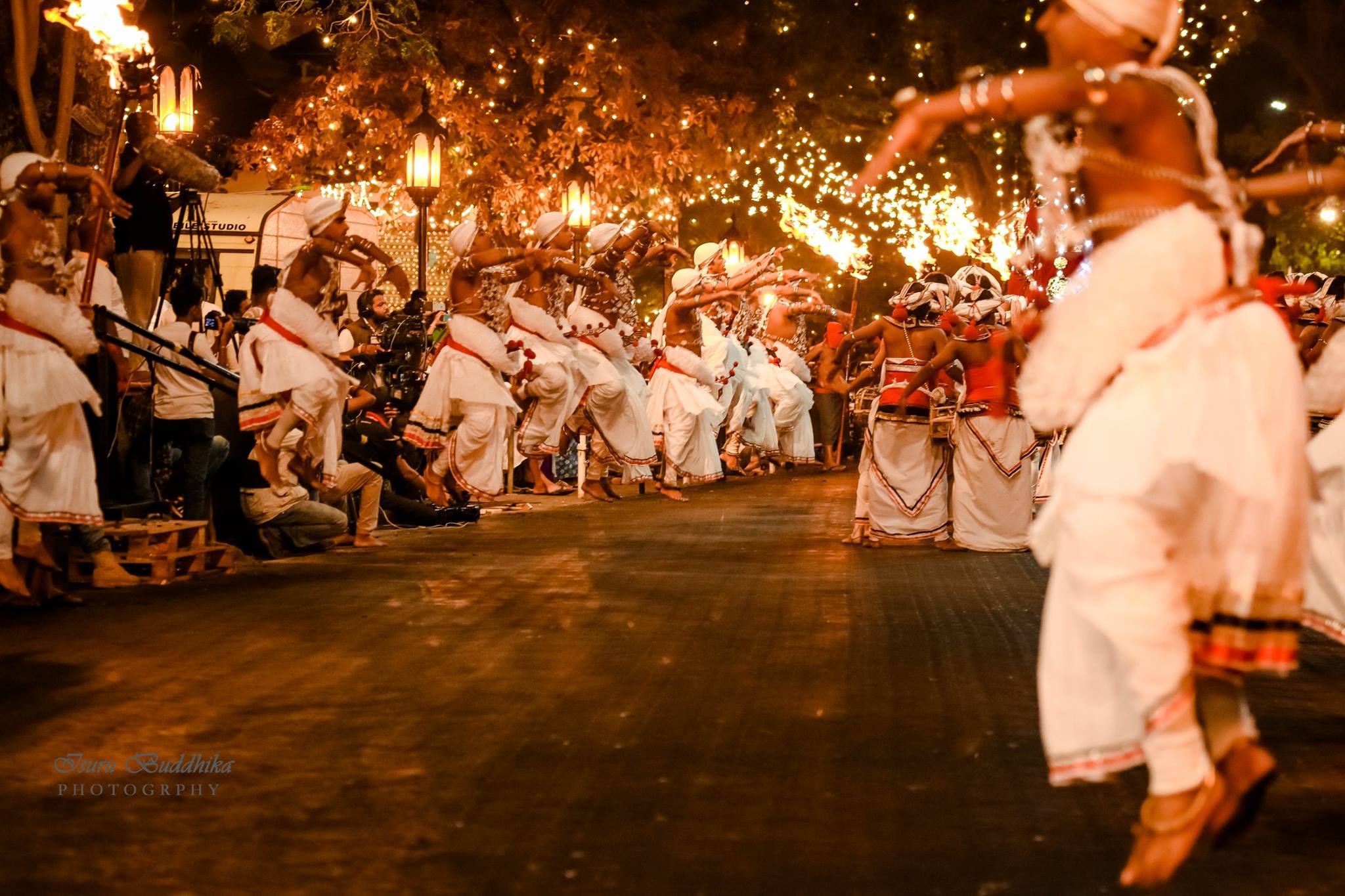
History of the Kandy Esala Perahera
The roots of Esala Perahera can be traced back to the 4th century AD when Princess Hemamali and her husband, Prince Dantha, brought the Sacred Tooth Relic to Sri Lanka from India. It was believed by the people that the ruler who held the relic had the divine right to govern the land.
Throughout the centuries, the Sacred Tooth Relic was housed in several temples across the island. Finally, in the 16th century, it found its permanent home in Kandy's Sri Dalada Maligawa, or the Temple of the Sacred Tooth Relic.
The Esala Perahera festival is organized to honor and pay homage to the Sacred Tooth Relic. It serves as an important spiritual event for the country's Buddhist community.
The Ten-Day Extravaganza
The Esala Perahera is a ten-day event that typically takes place during the months of July or August, with the specific dates being determined by the lunar calendar. The festival is divided into two main parts: the Kumbal Perahera and the Randoli Perahera. The first five days consist of the Kumbal Perahera, which is relatively simple. The second half, the Randoli Perahera, is more elaborate and ends with the grand finale on the tenth day.
The Grand Procession
The highlight of Esala Perahera is undoubtedly the grand procession that occurs on the final night of the festival. A spectacular display of Sri Lankan culture and tradition, the procession is led by a group of skilled drummers who play traditional instruments such as the 'davul,' 'thammattama,' and the 'horanewa'. These drummers set the pace and rhythm for the rest of the procession.
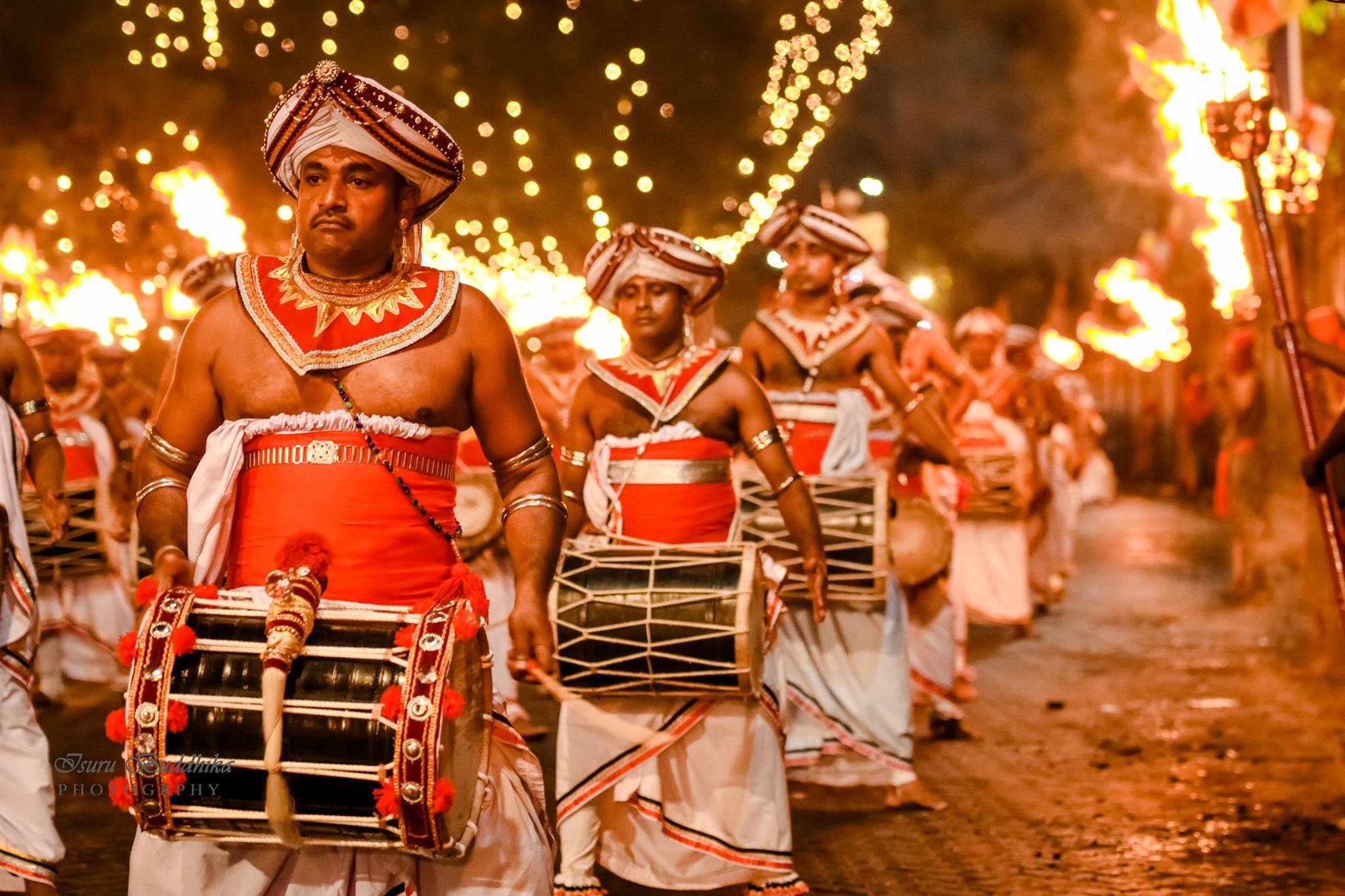
Following the drummers, there are numerous troupes of dancers, including Kandyan dancers, fire dancers, and whip-crackers, all dressed in vivid and intricate traditional attire. The dancers are accompanied by musicians playing flutes, tambourines, and other traditional instruments, creating a lively atmosphere that captivates the audience.
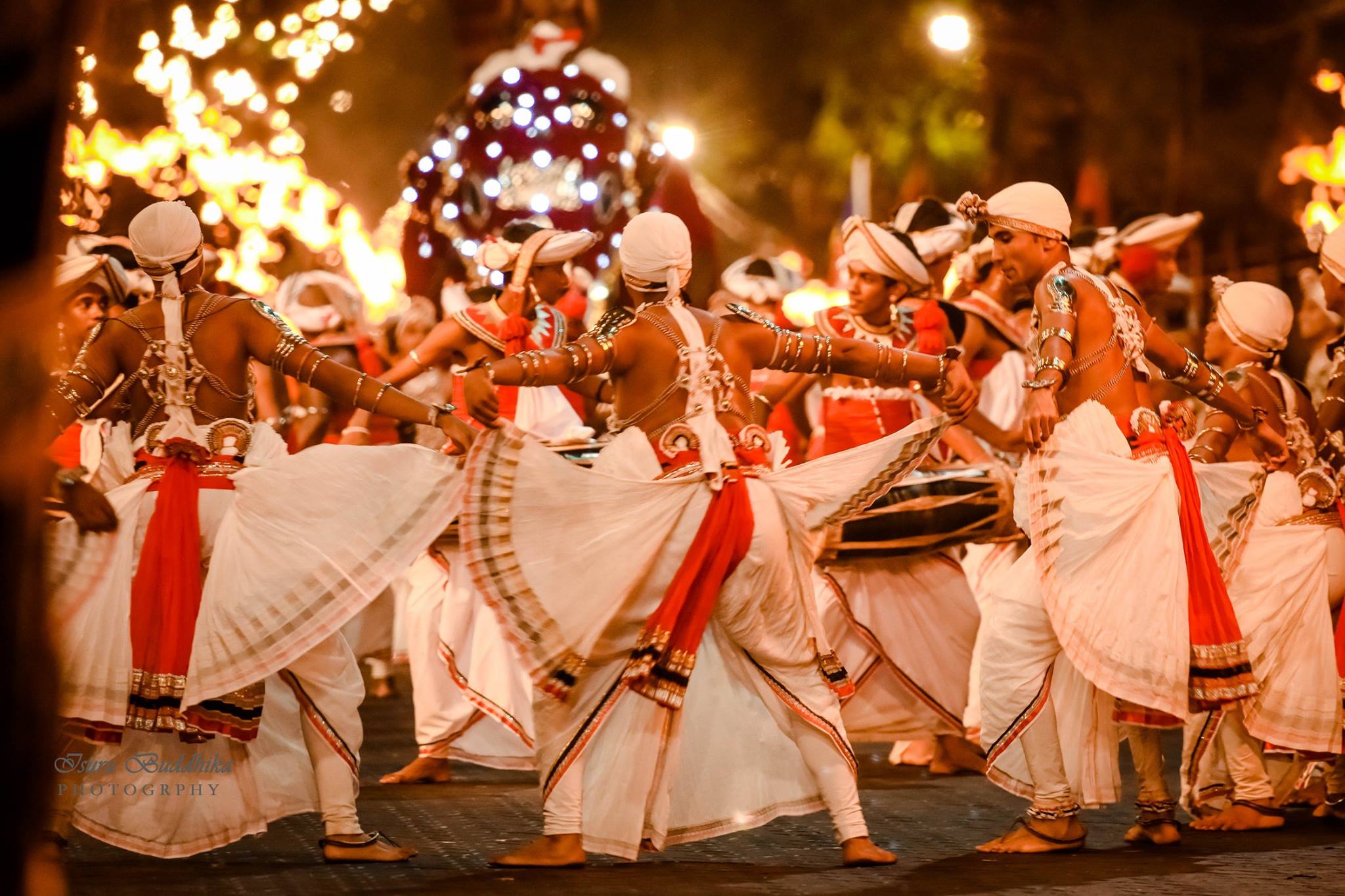
Adding to the visual splendor of the procession are the elaborately decorated elephants adorned with vibrant garments, jewelry, and intricate designs. The most important elephant of the procession carries a replica of the Sacred Tooth Relic in a golden casket on its back. As the procession winds through the streets of Kandy, thousands of locals and tourists gather to witness this unforgettable spectacle.
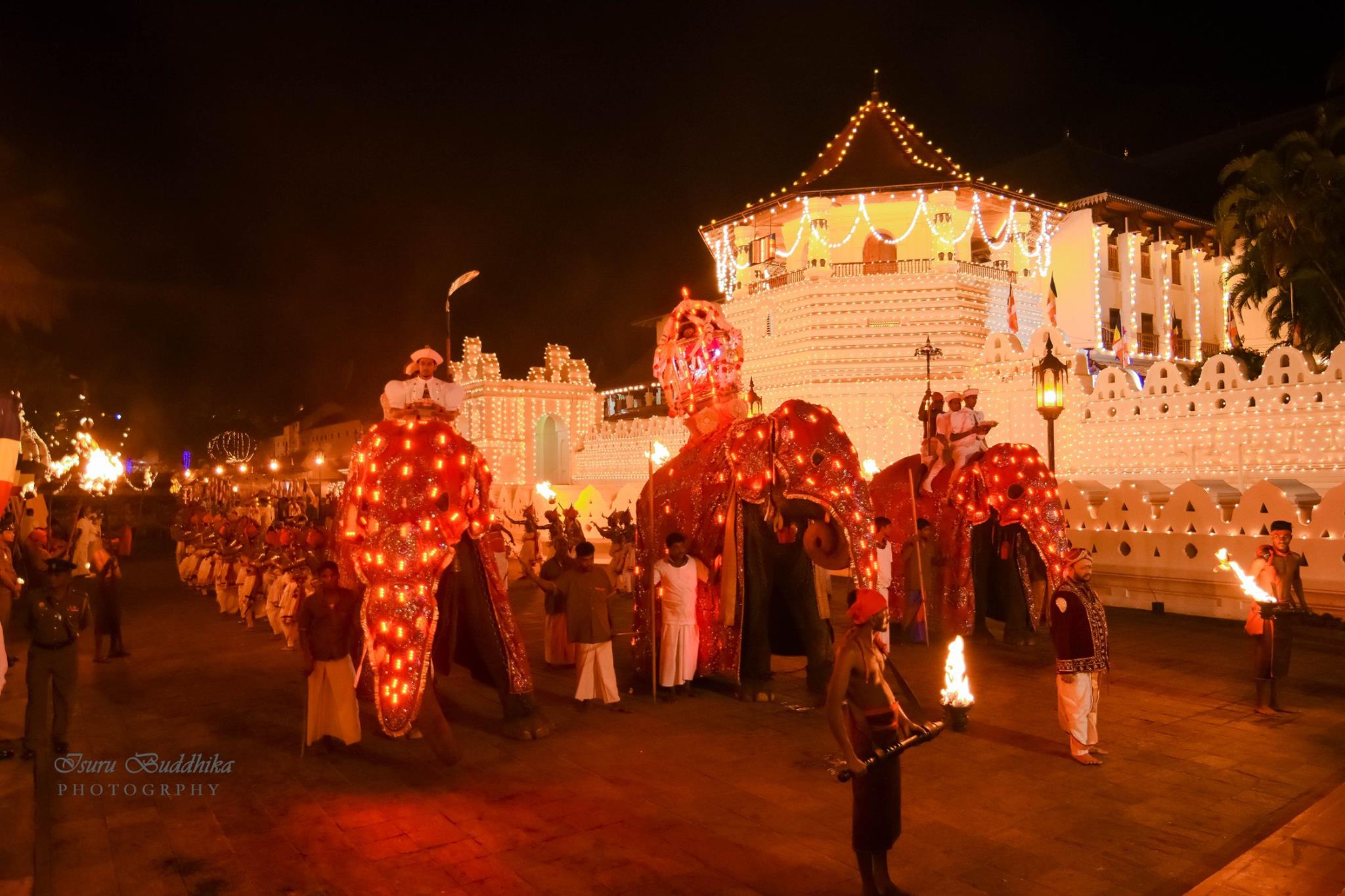
Spiritual Significance of the Esala Perahera in Kandy
Beyond the dazzling display of music, dance, and color, the Esala Perahera holds immense spiritual importance for Sri Lanka's Buddhist community. The festival is a time of grand celebration and deep devotion, with many people participating in religious ceremonies and offering prayers at the Temple of the Sacred Tooth Relic.
It is believed that witnessing the procession brings good luck and blessings, making the event a deeply moving and transformative experience for all who attend.
Experiencing the Esala Perahera as a Tourist
For visitors to Sri Lanka, the Esala Perahera offers a unique opportunity to immerse themselves in the island nation's rich cultural heritage and spirituality. Kandy, a UNESCO World Heritage Site, is a popular tourist destination in its own right, with attractions such as the Royal Palace, the Kandy Lake, and the Peradeniya Botanical Gardens.
The addition of the Esala Perahera brings an extra layer of excitement and spectacle to the city, making it an unforgettable experience for travelers. However, visitors should be prepared for large crowds and limited accommodations during the festival. Due to the influx of tourists and pilgrims, booking accommodations and transportation well in advance is recommended.
Tips for Enjoying the Esala Perahera
- Secure a good viewing spot: To get the best view of the procession, arrive early and find a spot along the main streets of Kandy. Some establishments also offer balcony seating for a fee, providing an unobstructed view of the festivities.
- Dress appropriately: As a religious event, it is important to dress modestly when attending the Esala Perahera. Visitors should avoid revealing clothing and cover their shoulders and knees.
- Wear comfortable footwear: It's important to wear comfortable shoes, as you may be standing for several hours.
- Capture the memories: Bring a camera to capture the stunning visuals of the Esala Perahera. However, be mindful of the local customs and avoid using flash photography near the elephants or during the more solemn moments of the procession.
The Esala Perahera is one of many things you can experience in the beautiful city of Kandy. Find out more in our article about the top things to do in Kandy.
The Esala Perahera is undoubtedly Sri Lanka's most significant religious festival, attracting thousands of visitors annually. With its breathtaking display of colorful elephants, traditional music, dance, and sacred rituals, it is a perfect opportunity for tourists to experience the rich history, culture, and spirituality of Sri Lanka. It will be an unforgettable, once-in-a-lifetime experience that you will cherish for years to come.
Wonders Of Ceylon

IMAGES
VIDEO
COMMENTS
It is our duty to understand the value of the historic Dalada Perahera and hand it over to the next generation. This Essay has 218 words. Total number of words to be = 200. Total Marks = 14. Sinhala essay :- The Kandy Esala Perahera/ Kandy Dalada Pereahera - Grade 8.
Kandy Perahera English essay. Kandy Perahera comes in March. It is very interesting. A lot of people visit Kandy to see the Perahera. Many elephants walk in the Perahera. 'The Maligawa elephant' is the most beautiful. It takes the casket of tooth -the tooth of Lord Buddha. The Kandyan dancers go in front. Elephants come after them.
Perahera Tuskers in front of Temple of the Tooth. The Kandy Esala Perahera (the Sri Dalada Perahara procession of Kandy) also known as The Festival of the Tooth is a festival held in July and August in Kandy, Sri Lanka.This historical procession is held annually to pay homage to the Sacred Tooth Relic of Buddha housed at the Sri Dalada Maligawa in Kandy. A unique symbol of Sri Lanka, the ...
The Kandy Esala Perahera also known as The Festival of the Tooth is a grand festival celebrated with elegant costumes and is held in July and August in Kandy, Sri Lanka.
Esala Perahera in 2020. Unlike in the past, this year the Kandy Esala Perahera does not allow public participation due to preventive measures employed to subdue the Covid -19 pandemic. The number of elephants and artists who would take part in the festival are also reduced. But the essence of the festival is in no way dampened.
In fact, the very practice of Kandy's perahera is a combination of, primarily, two peraheras. The Esala peraherapre-dated the arrival of the Sacred Tooth Relic in Kandy, when farmers paid homage to the gods for rainfall during the month of Esala on the Sinhala calendar. Later, after the Sacred Tooth Relic was brought to the city in the 16th ...
The Kandy Esala Perahera | මා දුටු ලස්සනම පෙරහැර | අනුමාන රචනා | English essay සිංහලෙන්#KandyEsalaPerahera2022 #essay_on ...
Tissa Devendra, in The Island, 3 October 2018, with this title " Mirror of Civilisation" b eing a book review of The Kandy Asala Maha Perahera - by Dr.Lorna Dewaraja (Vijitha Yapa Publications 2018) In publishing this fine book, Vijitha Yapa has faithfully fulfilled the last wish that Dr. Dewaraja expressed to her family - to hand over to Vijitha Yapa the manuscript of her book on the ...
The Kandy Esala Perahera is a grand pageant that showcases the island's millennia-old traditions and customs. It represents the legacy of the Dalada Vahansa in Sri Lanka and the great dedication of her people to protect and worship the Sacred Relic. exploresrilanka.lk EXPLORE SRI LANKA | AUGUST 2021.
In the aftermath of historic Kandy Esala Perahera, Viharadhipathi of Rangiri Dambulu Rajamaha Vihare Ven. Godagama Mangala Thera speaks about its importance in terms of Sinhala Buddhist culture.
A few days before the Esala Perahera, A Kapa, a sapling from a tree that sheds milky juice is erected in each of the four Devales. On the 5th day, The Kumbal Perahera begins and goes on for 10 consecutive nights when the sacred relic casket is taken around the streets of Kandy accompanied by exotically costumed dancers and drummers.
5. Be prepared and patient. It is almost impossible to avoid crowds of people during the Esala Perahera. Instead of getting mad about it, you can choose to be calm and maintain a peace of mind. Kandy Esala Perahera Dates in 2017. 1st Kumbal Perahera - July 29th 2017 2nd Kumbal Perahera - July 30th 2017 3rd Kumbal Perahera - July 31st 2017
Grandeur and Scale of the Parade. The Esala Perahera festival in Kandy, Sri Lanka, is known for its grandeur and scale.The procession features majestic elephants adorned in ornate regalia, accompanied by dancers, drummers, and traditional musicians.. It's a mesmerizing display of vibrant colors and electrifying performances that create an unforgettable atmosphere.
The Kandy Perahera in Sri Lanka is not only one of the oldest rituals in Buddhism, but one of the oldest extant rituals in all of Asia. "Perahera" means procession. Processional music and dancing is a marker of antiquity because some of the earliest ritual processions grew from stationary artists starting to move. It follows that dance ...
Alahakoon, Champa N. K. 2012. "Festival of the tooth-relic during the colonial occupation" (in Sinhala). Pujaniyadaladasamskrutiya 7: 36-48. Da Cunha, Joseph G. 1875. Memoir on the History of the Tooth-relic of Ceylon: With a Preliminary Essay on the Life and System of Gautama Buddha. Bombay. Giles, H. A., trans. (1923) 2012.
The Kandy Esala Perahera is a vibrant and captivating cultural extravaganza that takes place in the city of Kandy, Sri Lanka. Regarded as one of the grandest. ... Sinhala and Tamil New Year. November 17, 2022 March 5, 2023 Special Days in Sri Lanka Vesak Poya Day.
This video includes information on Kandy Esala Perahera. It will be useful for students in grade 4 and 5. You can also use this as a speech or an essay.The E...
June 25, 2011. The famous Kandy Perahara (Esala Perahara / the festival of the tooth) is one of the most important annual Buddhist celebrations takes place in Sri Lanka and it is also considered as one of the most spectacular religious processions in Asia. Sri Lankans from all over the country and an ever increasing number of foreign visitors ...
The Kandy Dalada Perahera is an unparalleled visual extravaganza, showcasing the heritage, art, and spirituality of Sri Lanka. The procession, held over ten nights, is a mesmerizing display of over a hundred beautifully adorned elephants, drummers, dancers, and traditional musicians. The vibrancy of costumes and the precision of choreography ...
From Sean Mós. The history of the Kandy Dalada Perahera, or "Tooth Relic Procession," in Sri Lanka is an illustrious one that is closely associated with a holy tooth relic of the Buddha. Fearing unfriendly repercussions from neighboring kingdoms due to his conversion to Buddhism from Hinduism, the king of Kalinga, Guhaseeva, decided to ...
The tooth is precisely the reason for the 10-day elaborate multi-procession festival happening in the city this week, Kandy's Esala Perahera, in which a replica of the relic is paraded around ...
The Esala Perahera is a ten-day event that typically takes place during the months of July or August, with the specific dates being determined by the lunar calendar. The festival is divided into two main parts: the Kumbal Perahera and the Randoli Perahera. The first five days consist of the Kumbal Perahera, which is relatively simple.
The Esala Perahera is considered to be a ritual enacted to request the gods for rainfall and the Dalada Perahera is believed to have begun when the Sacred Tooth Relic of the Buddha was brought to Sri Lanka from India during the 4th Century AD. The Modern Perahera dates back to the reign of the Kandyan King Kirthi Sri Rajasinghe (1747 - 1781 ...